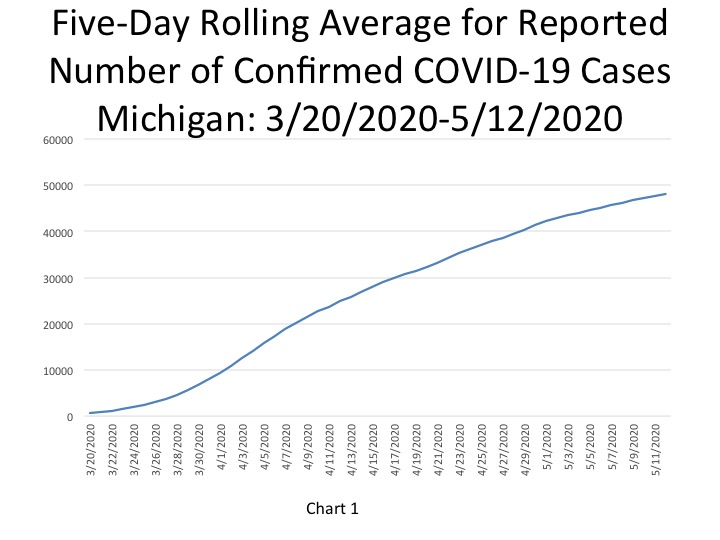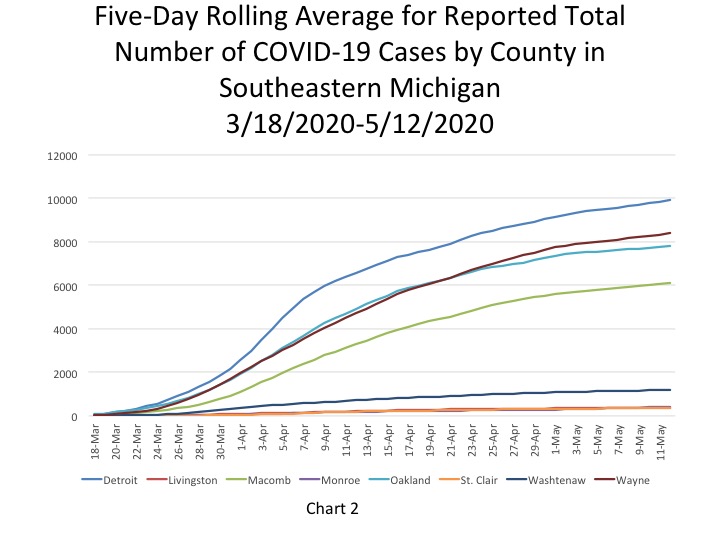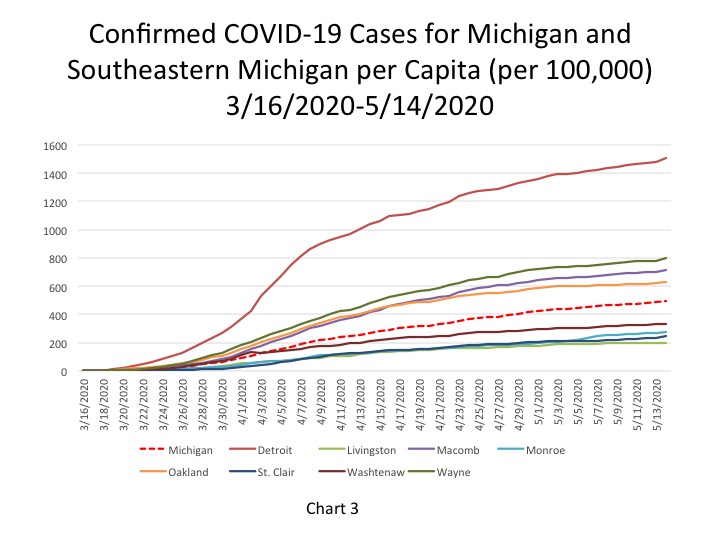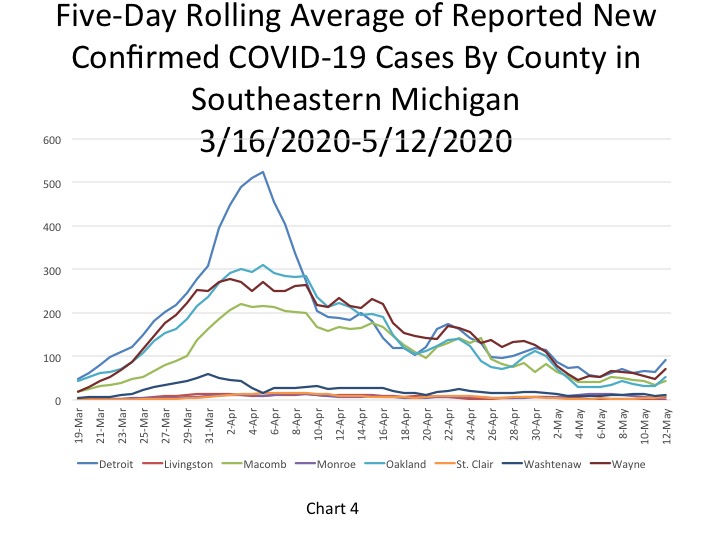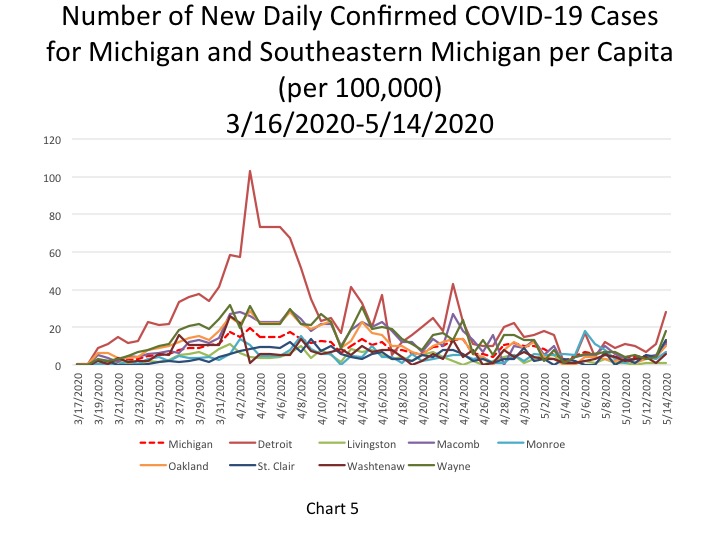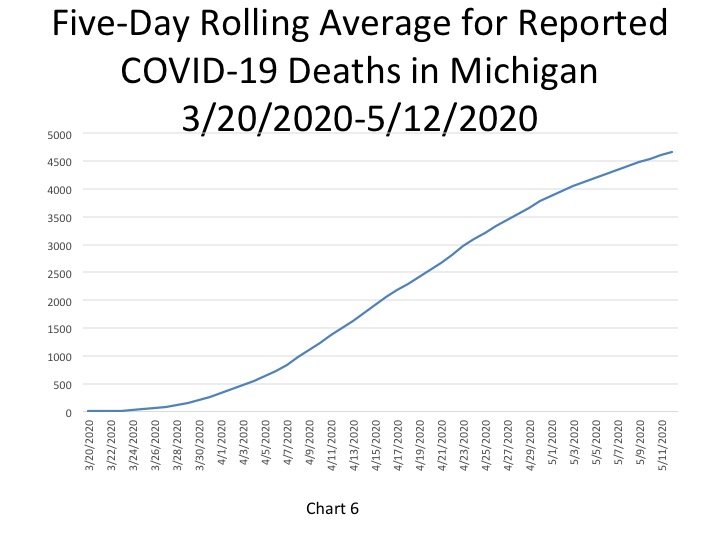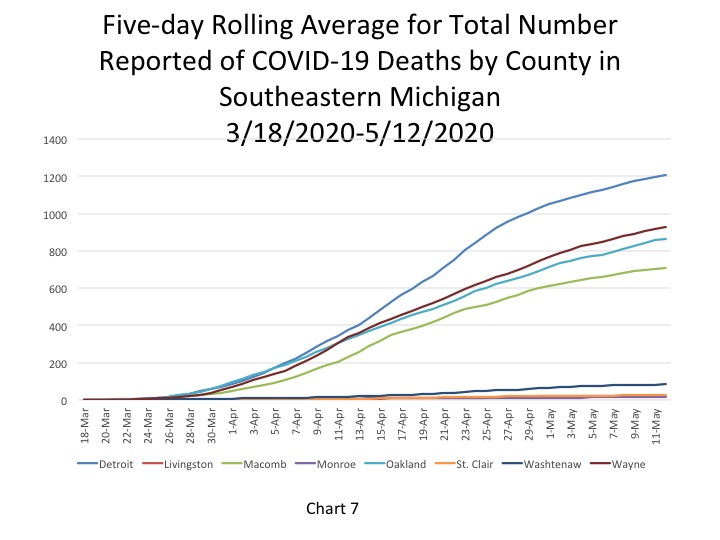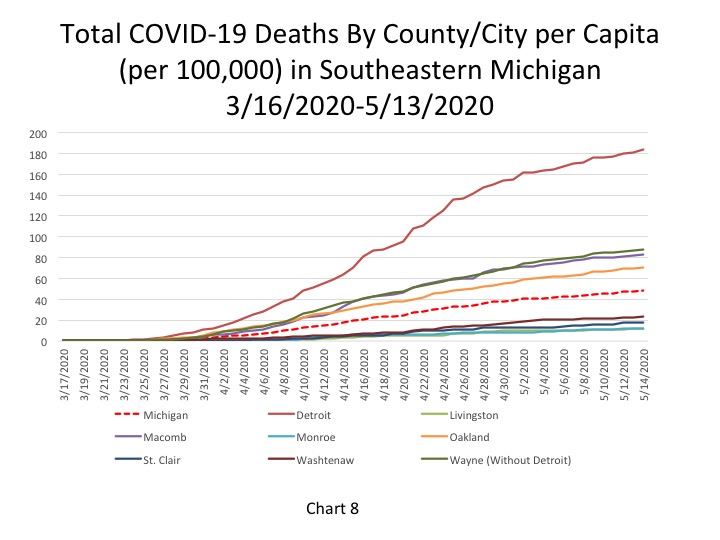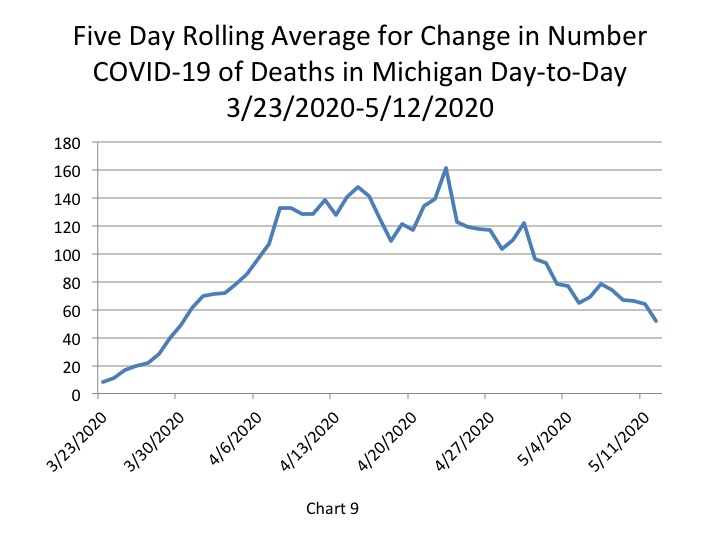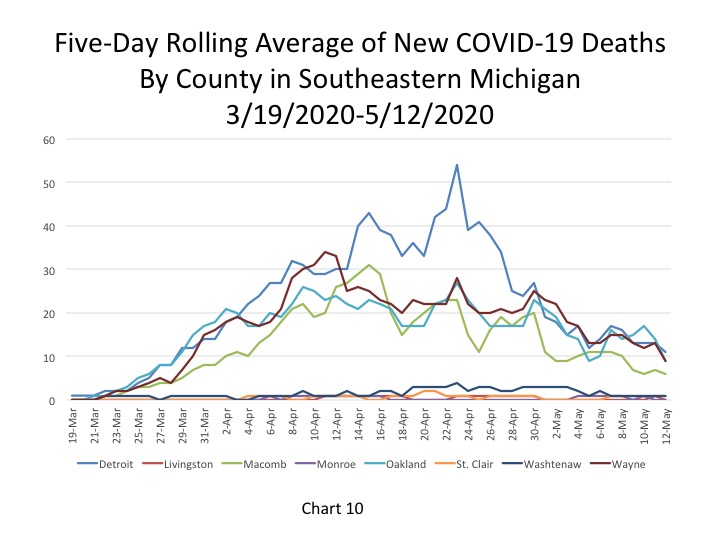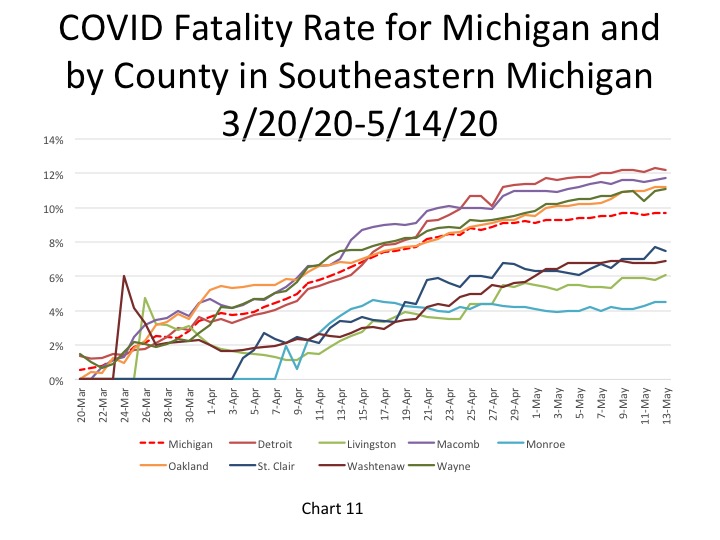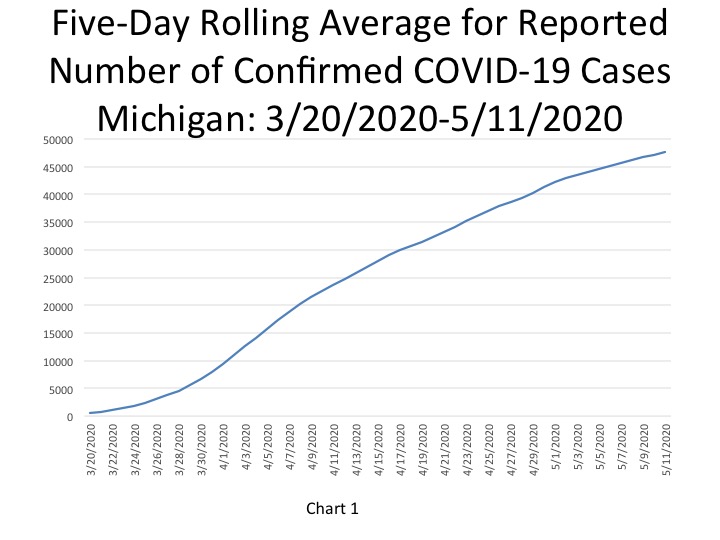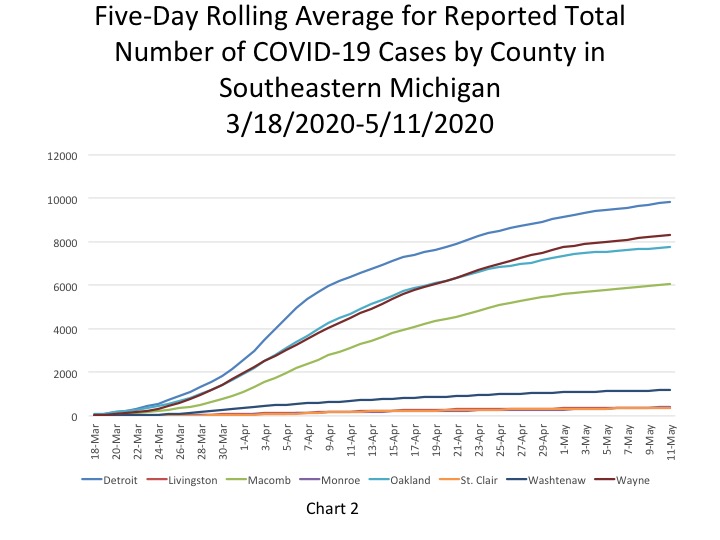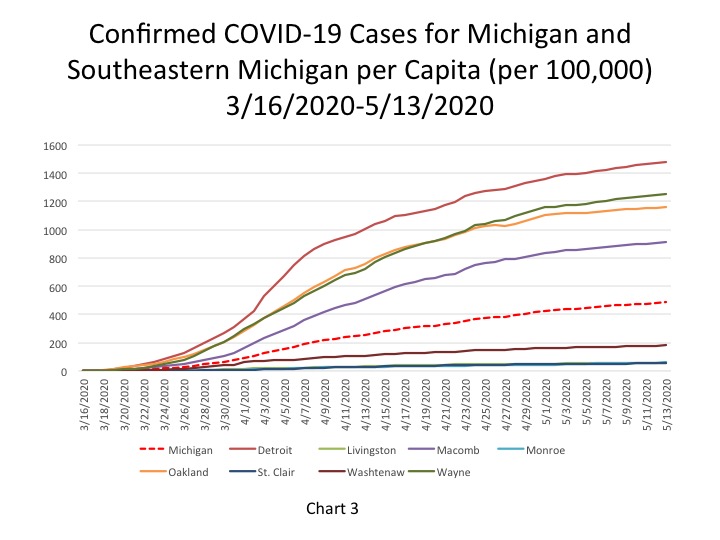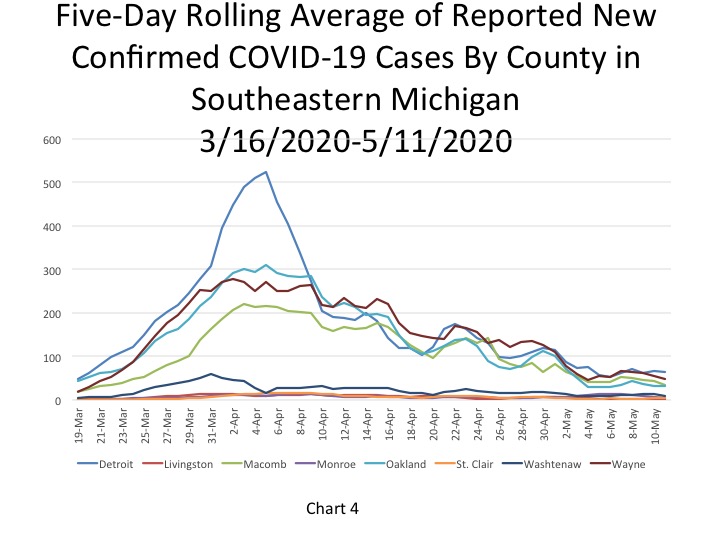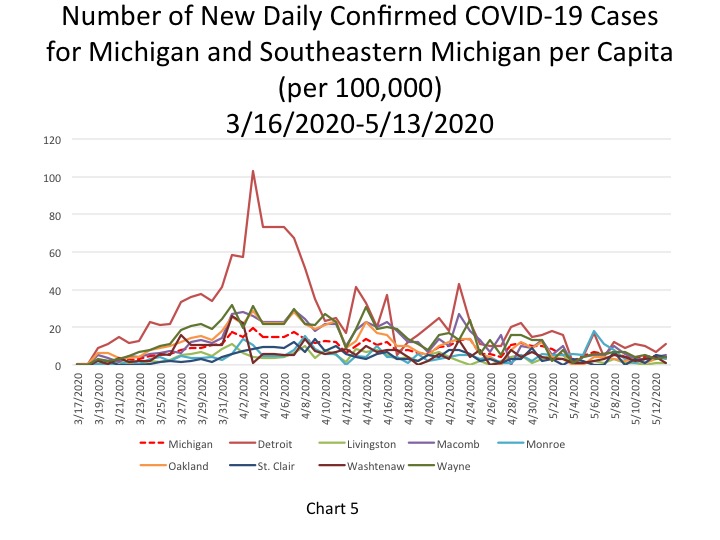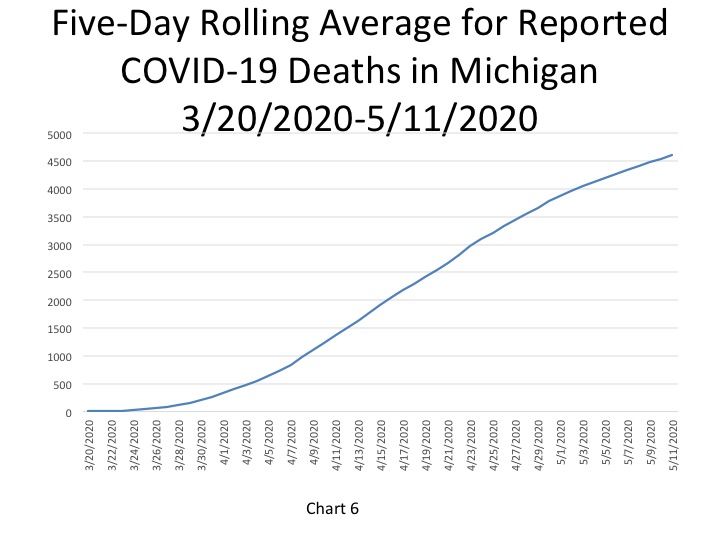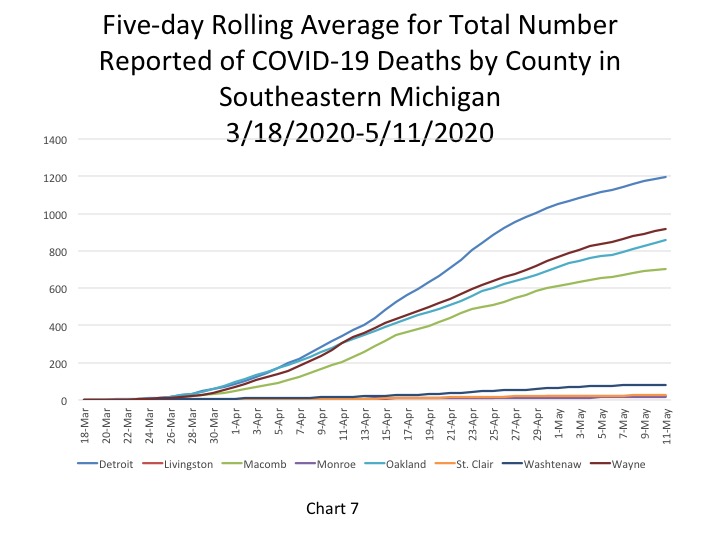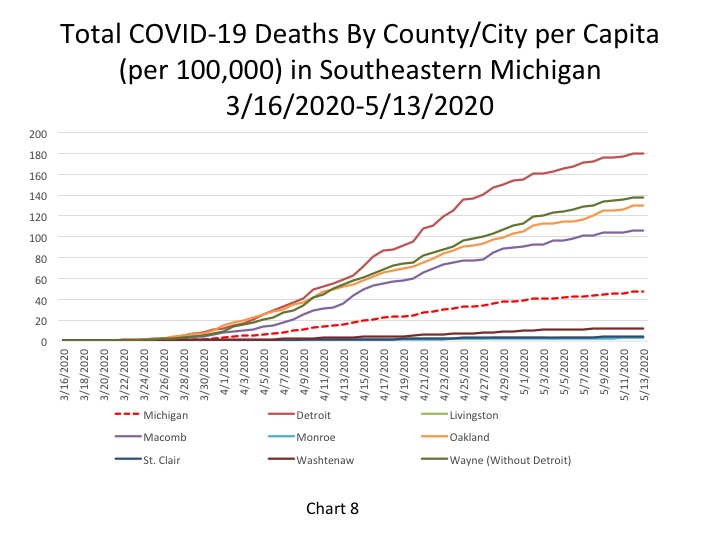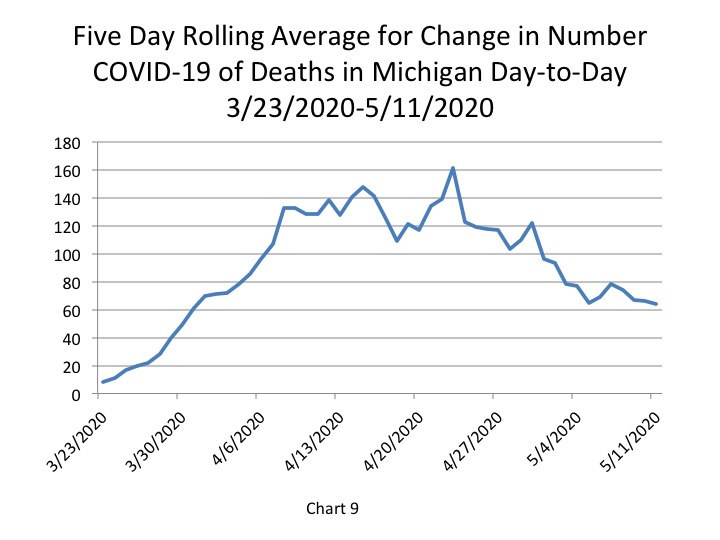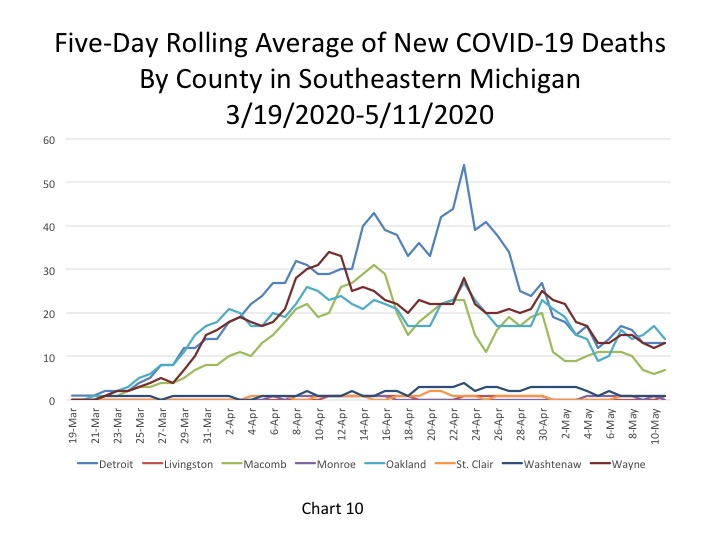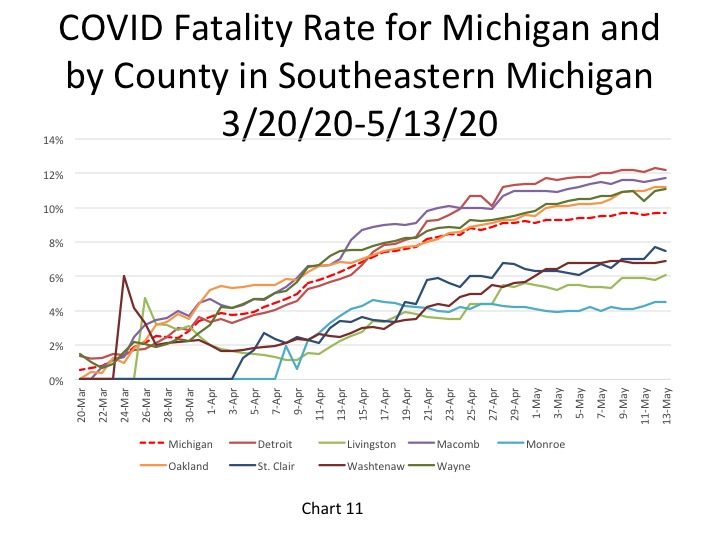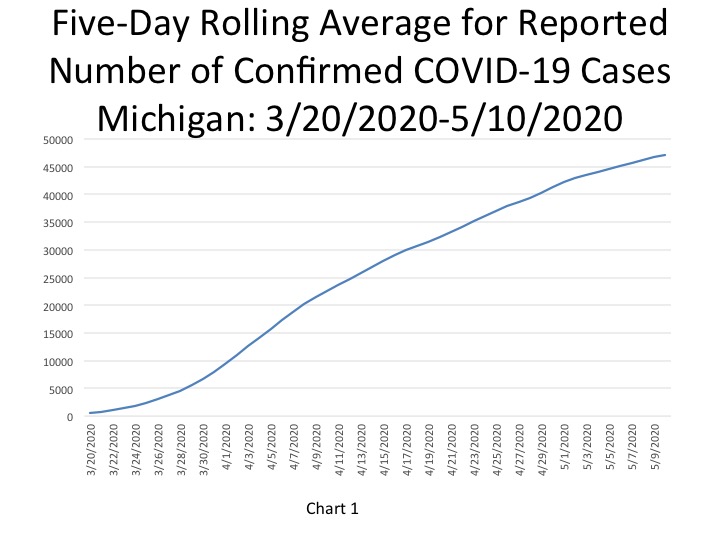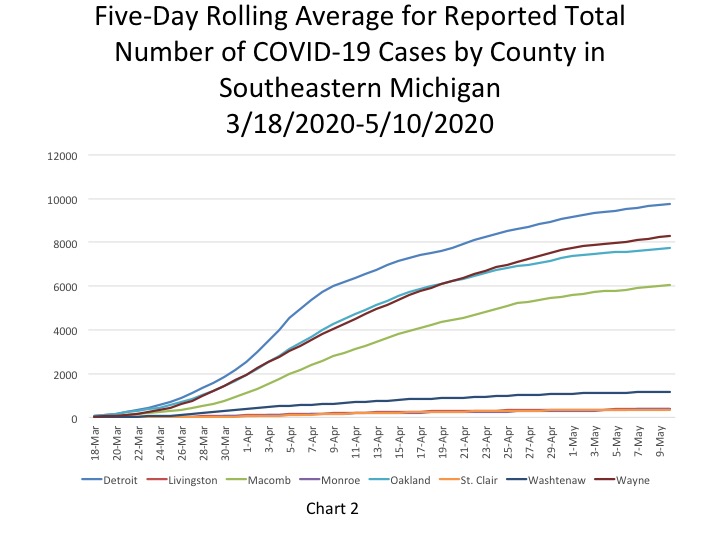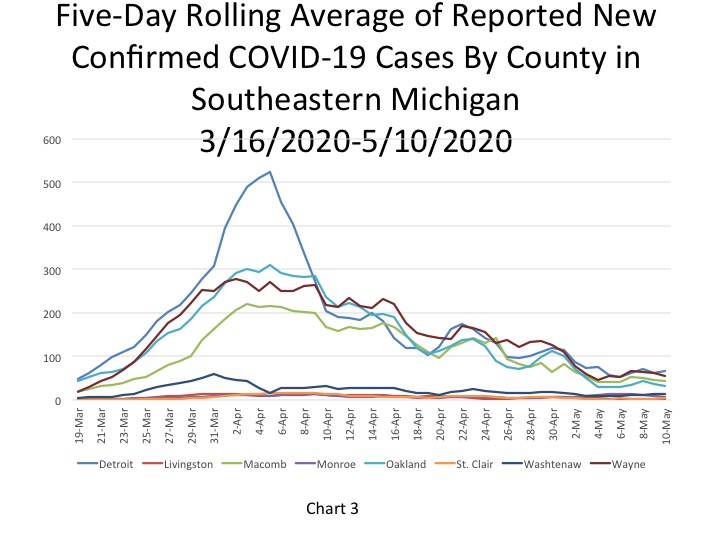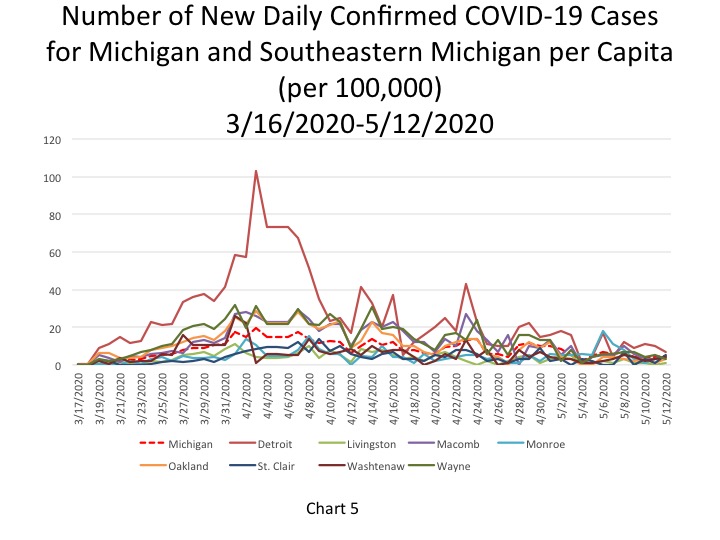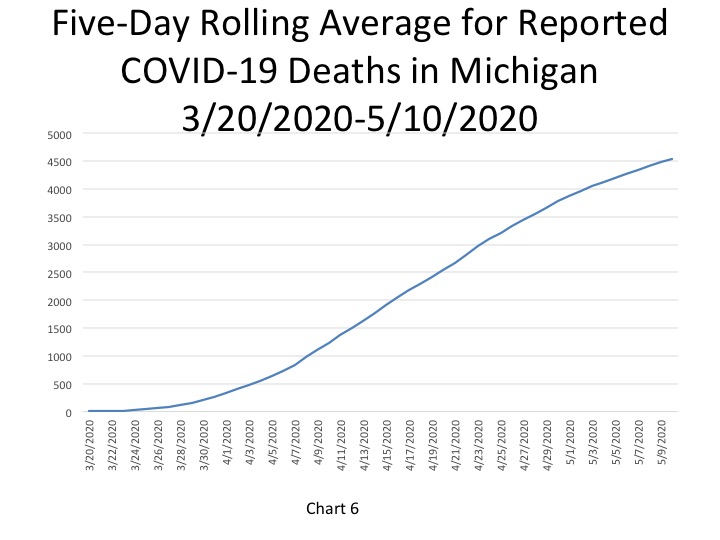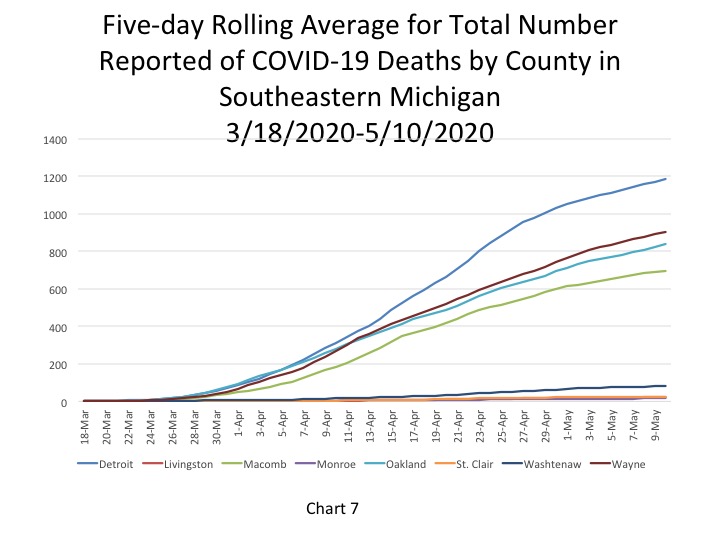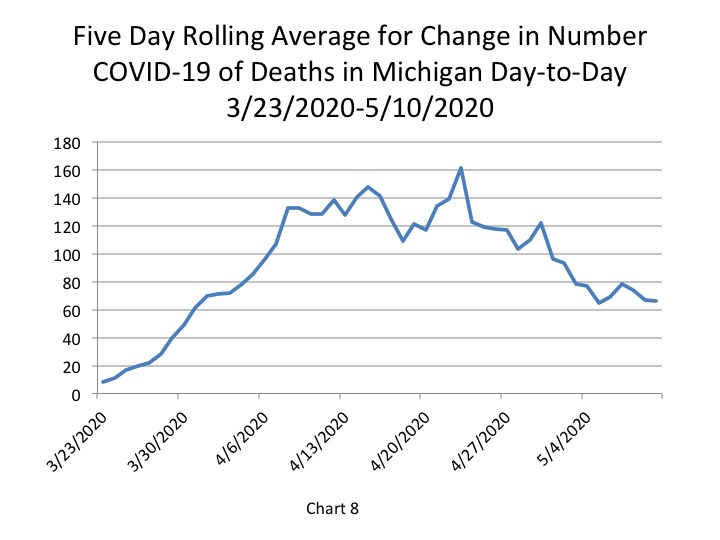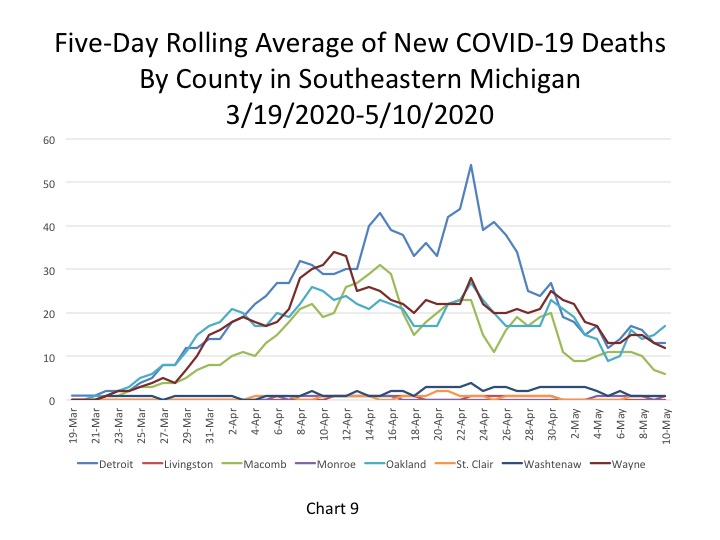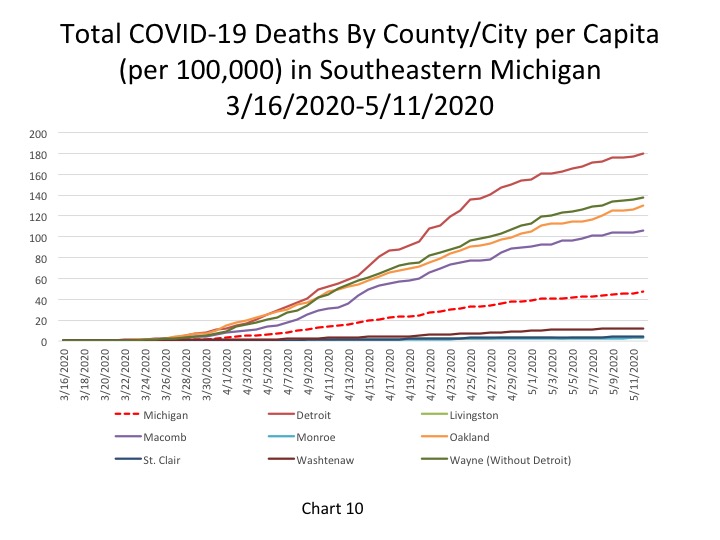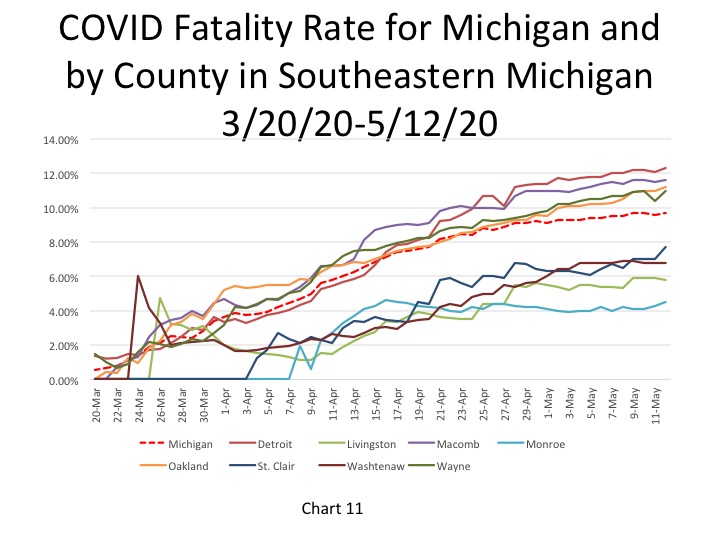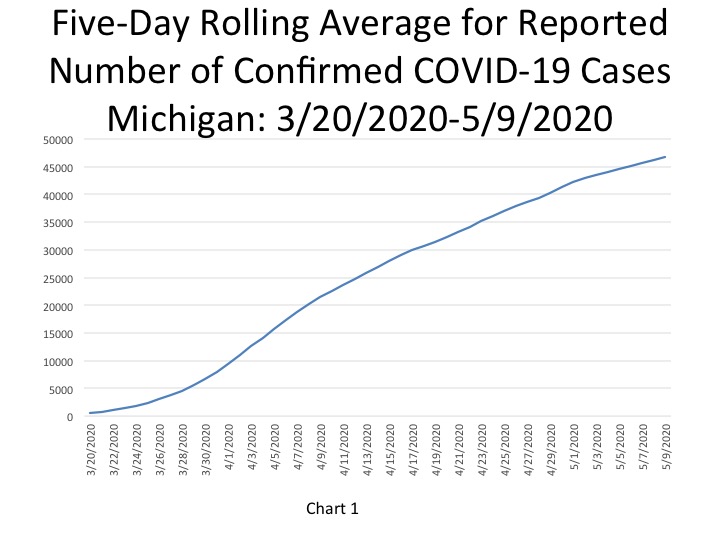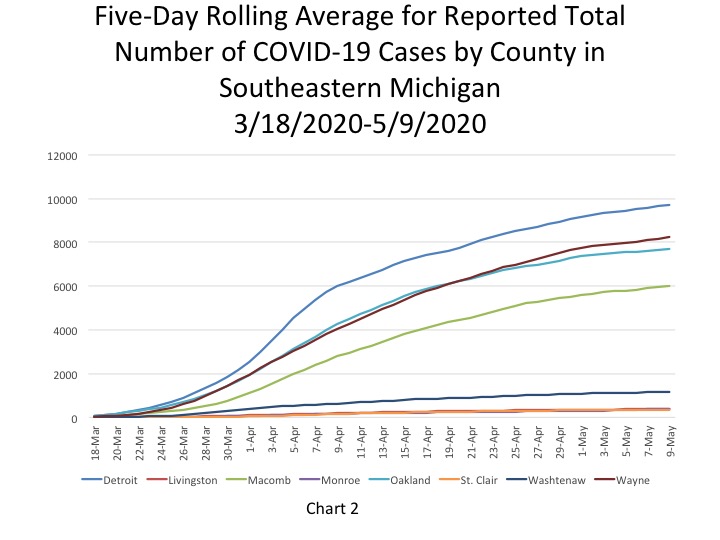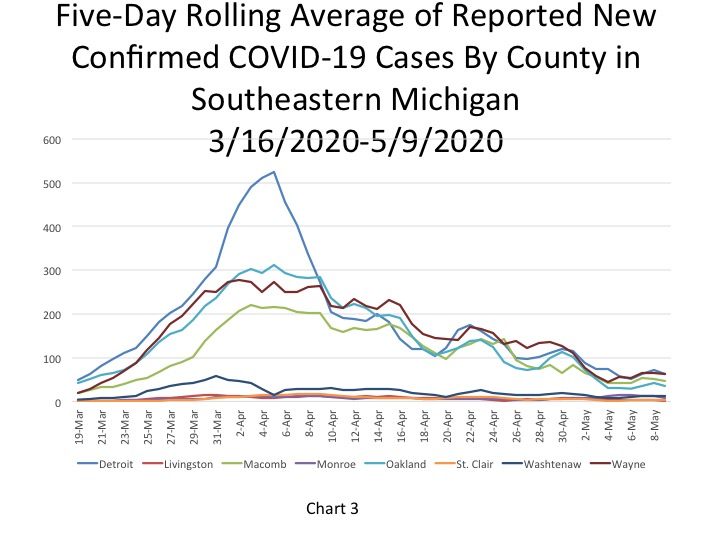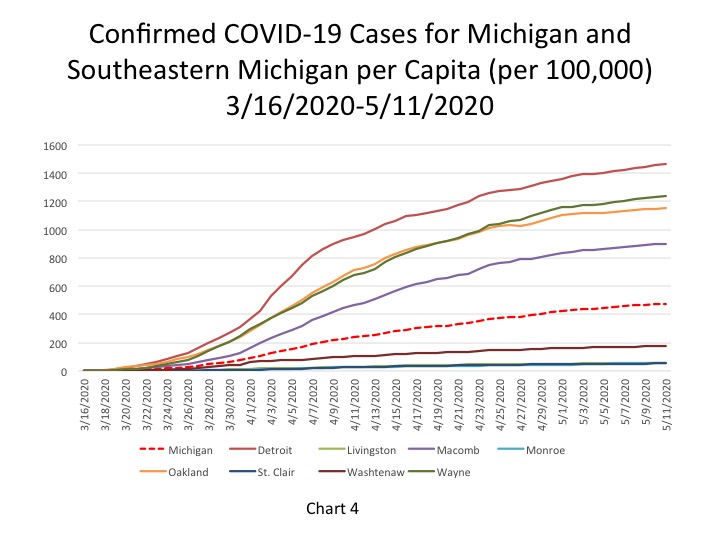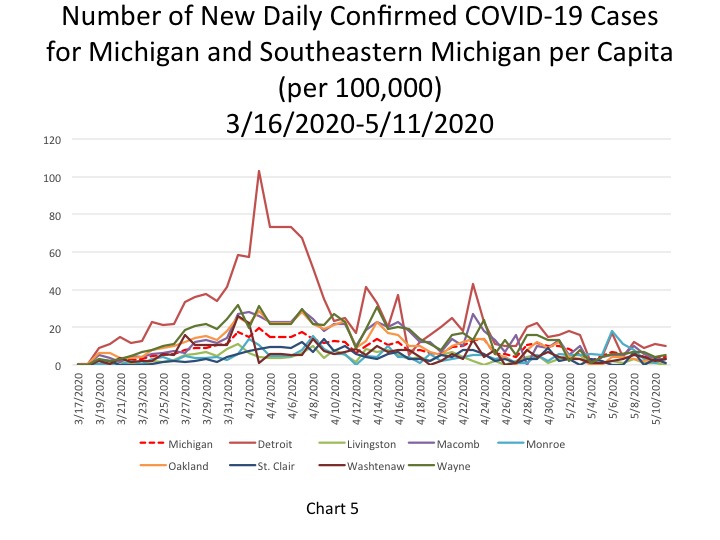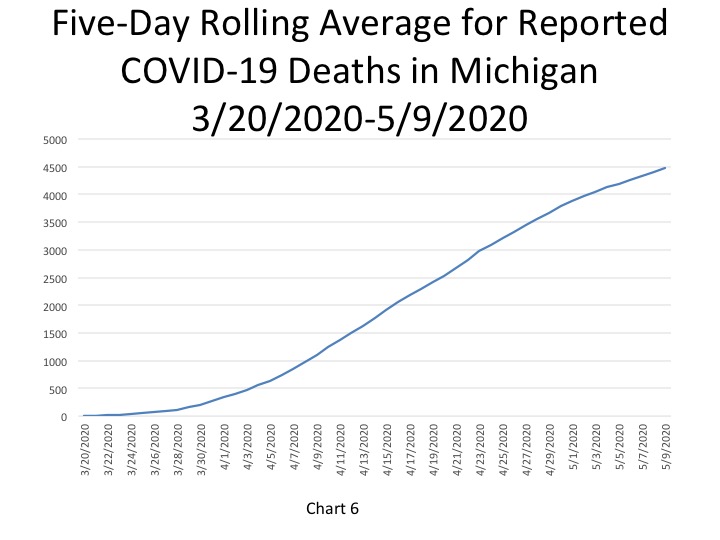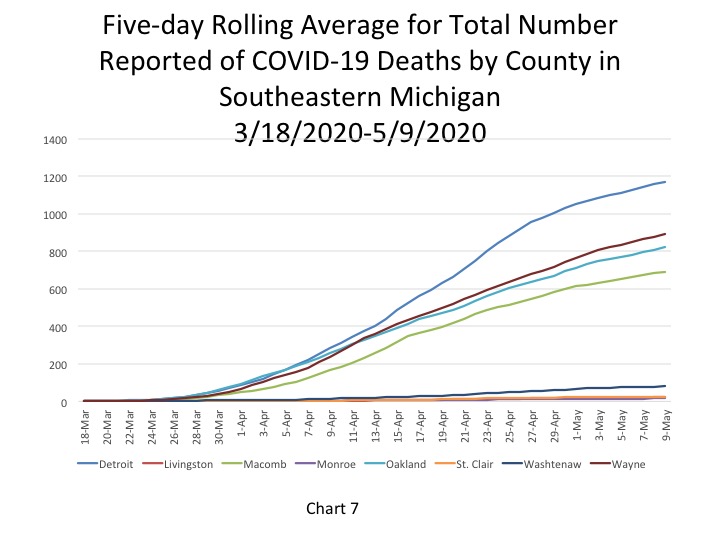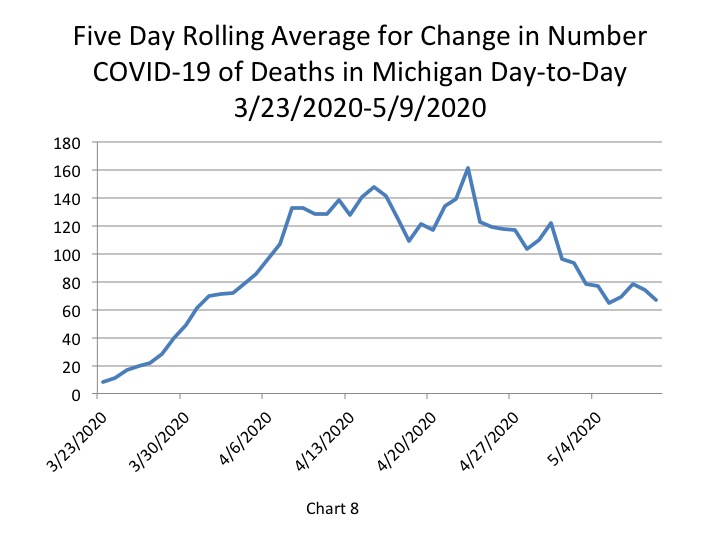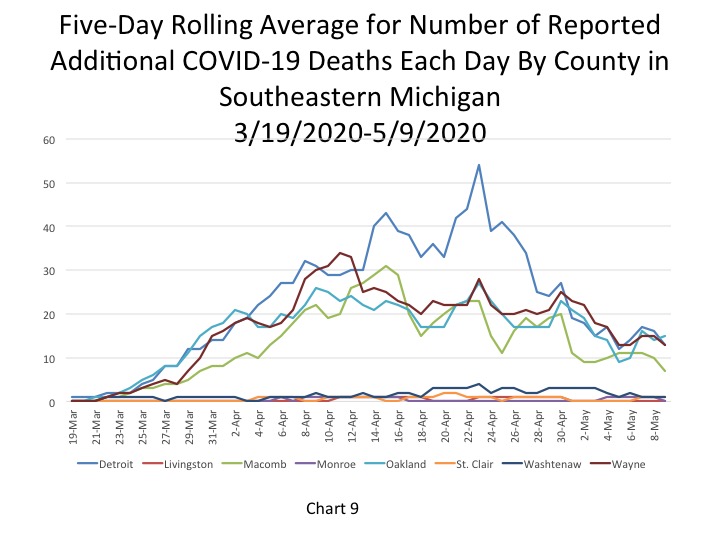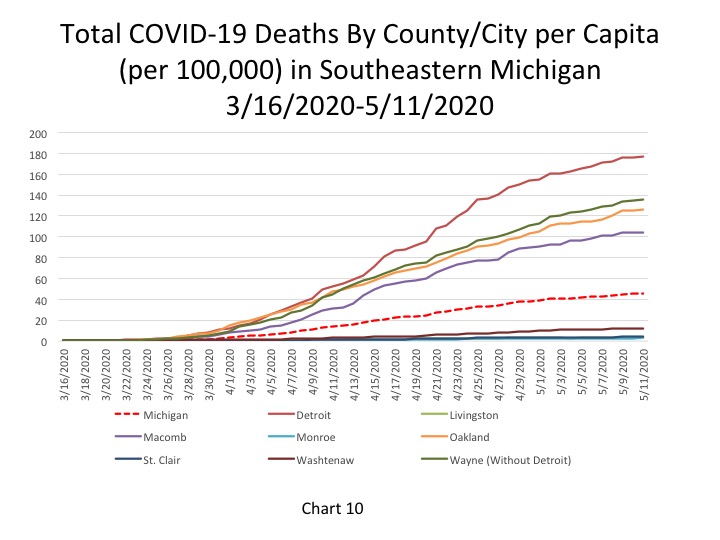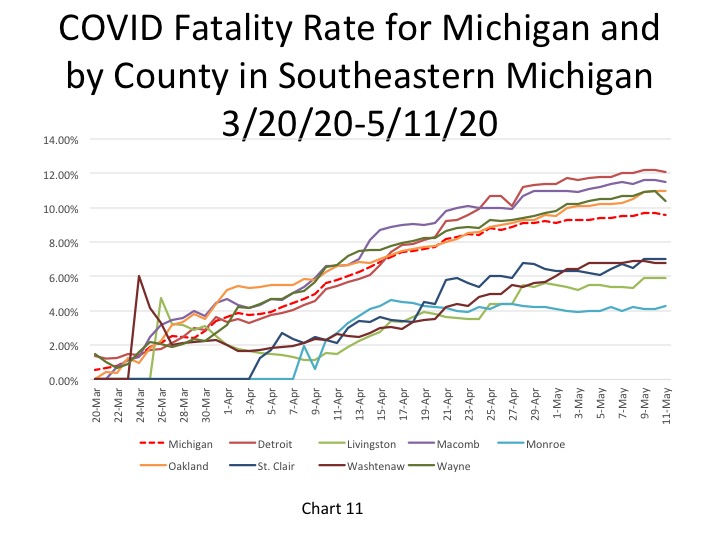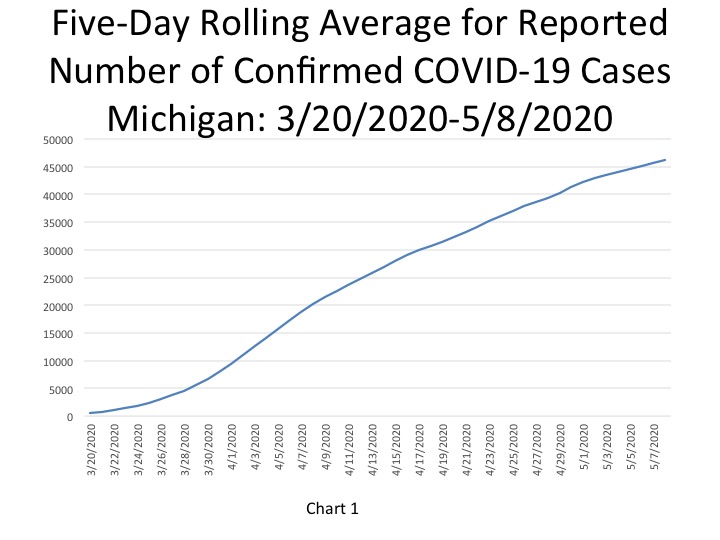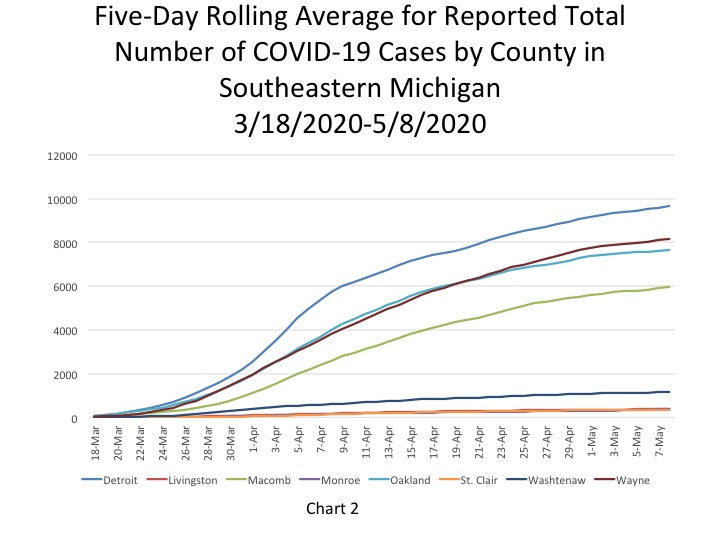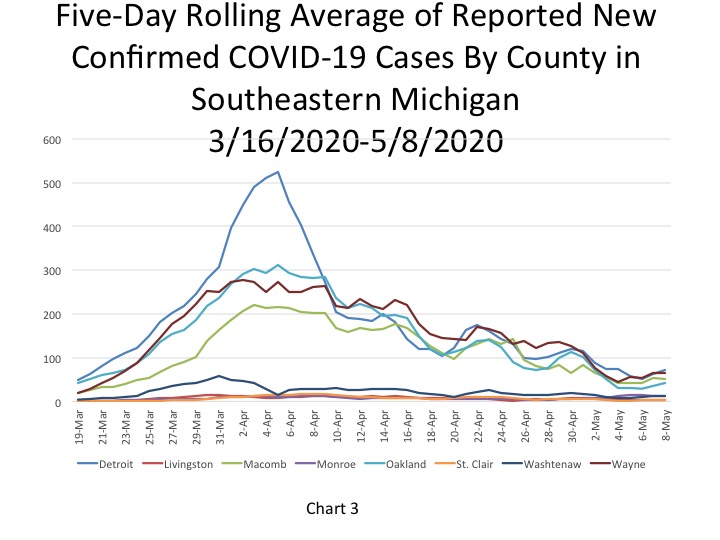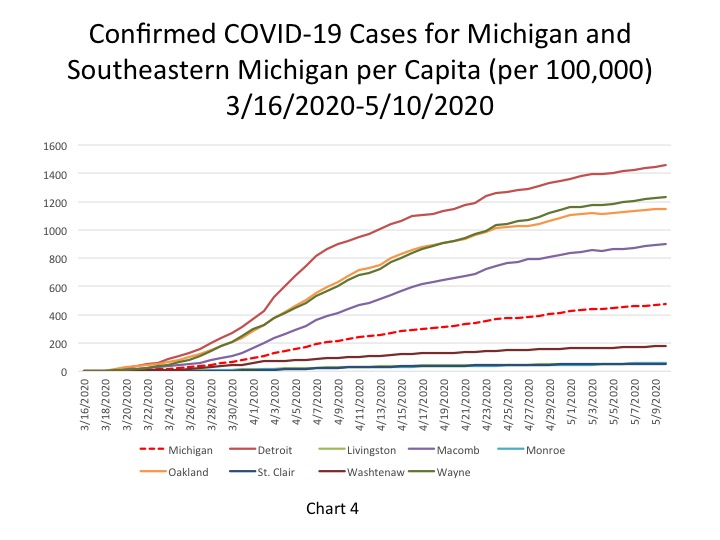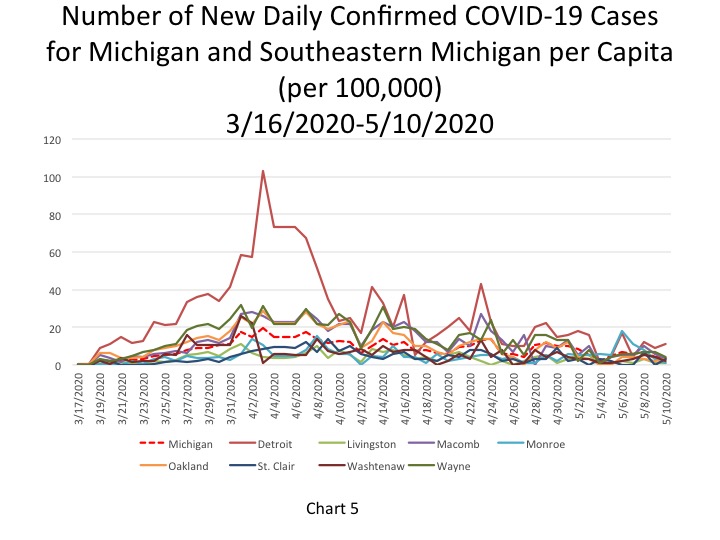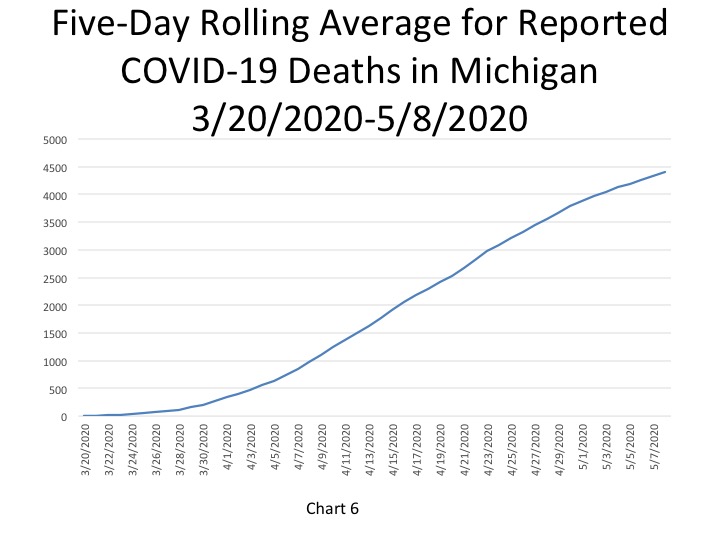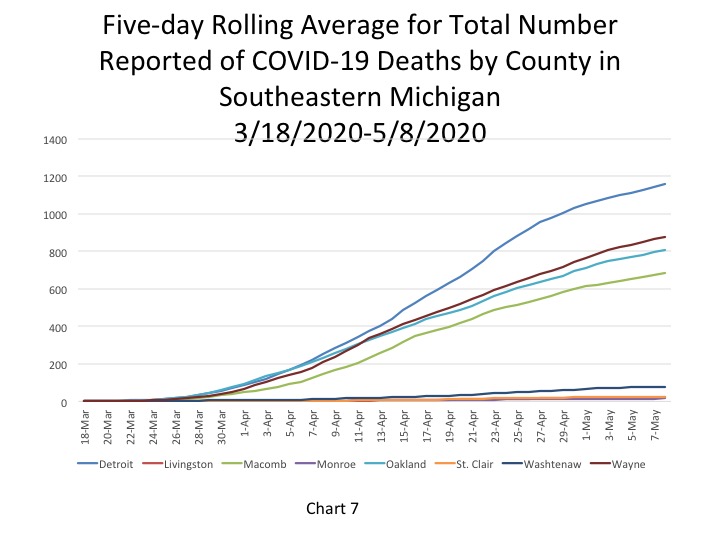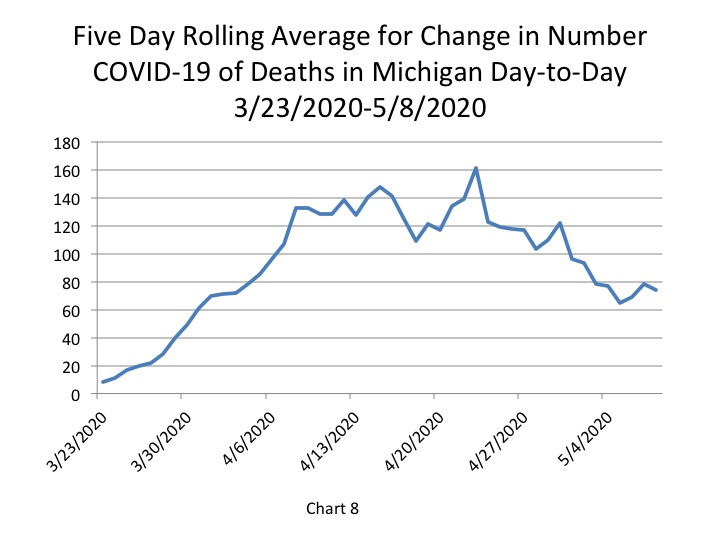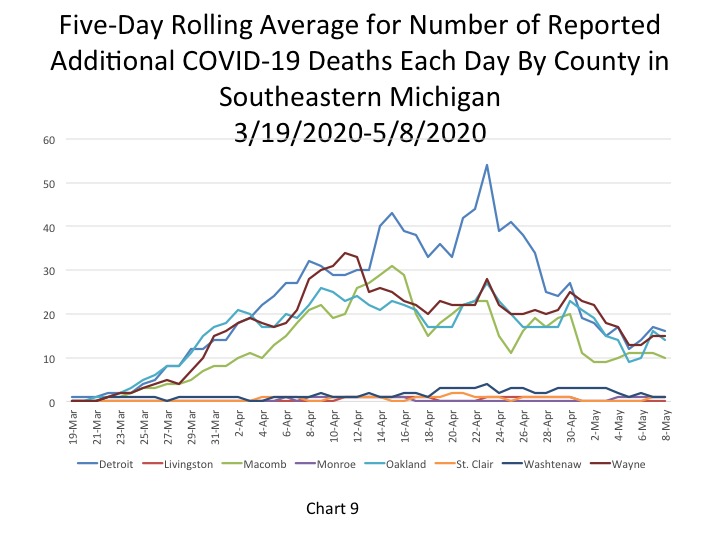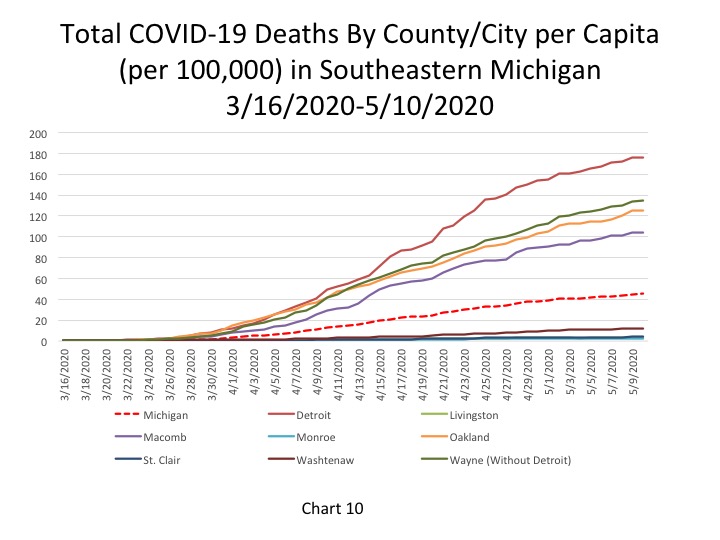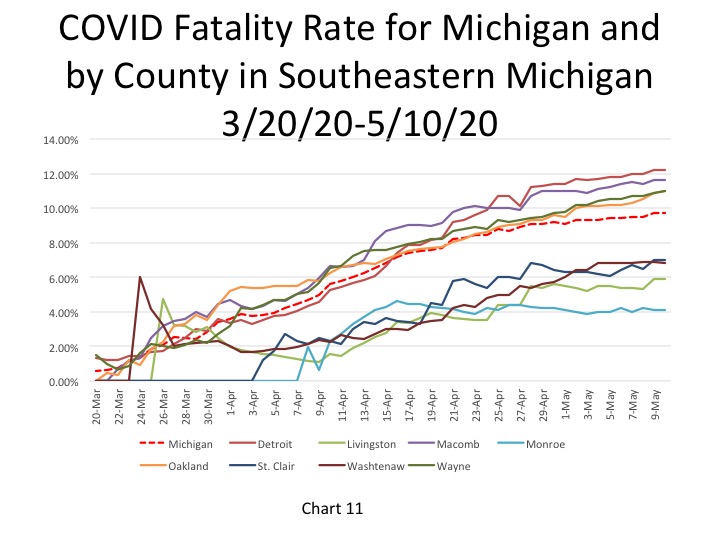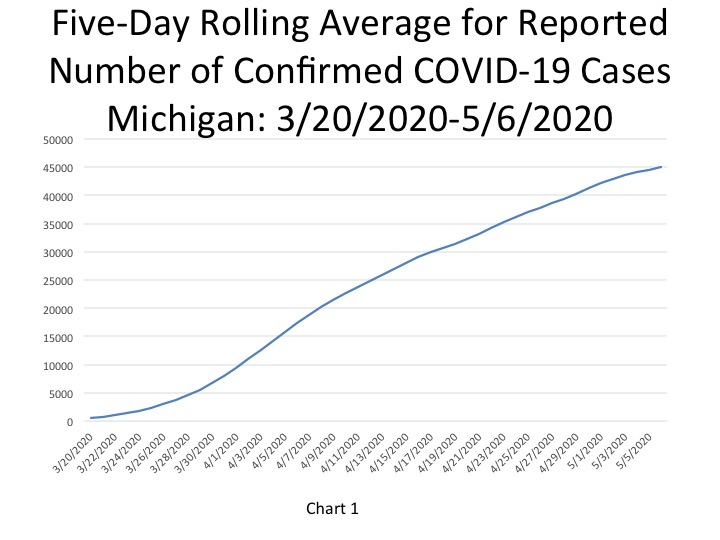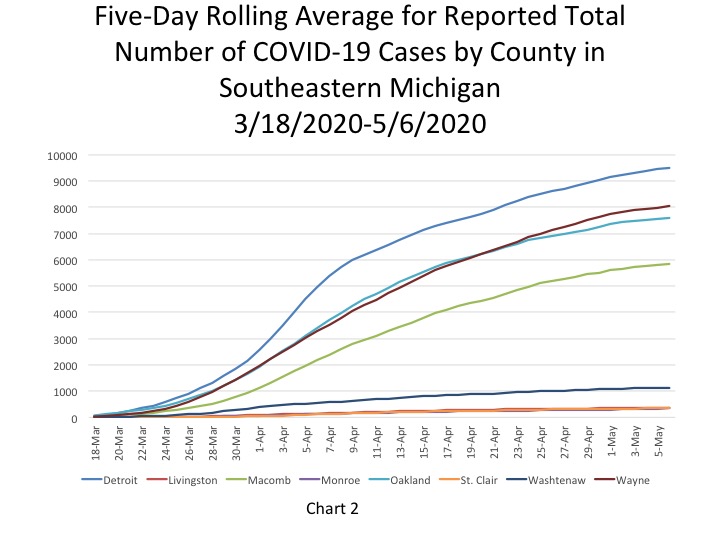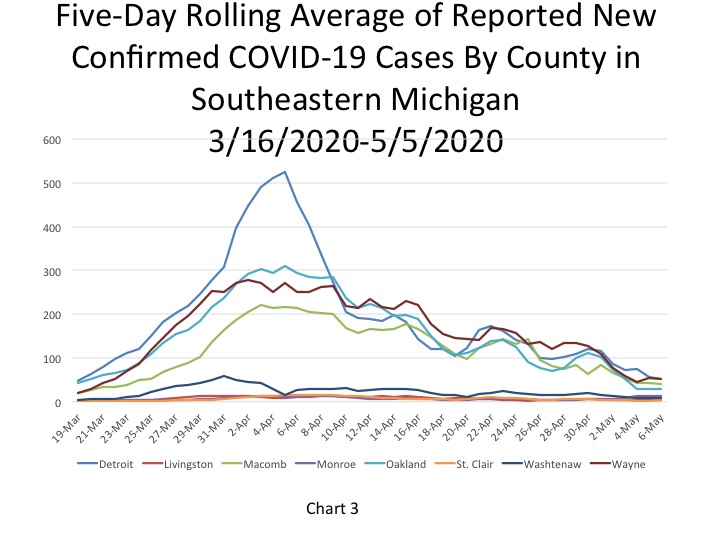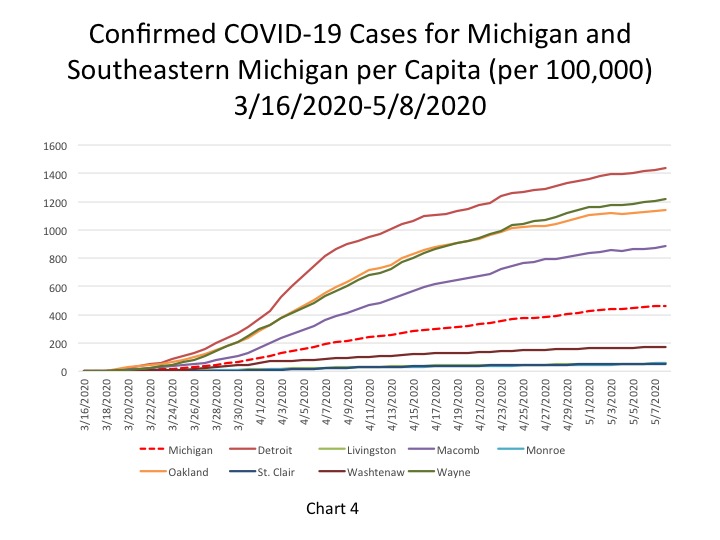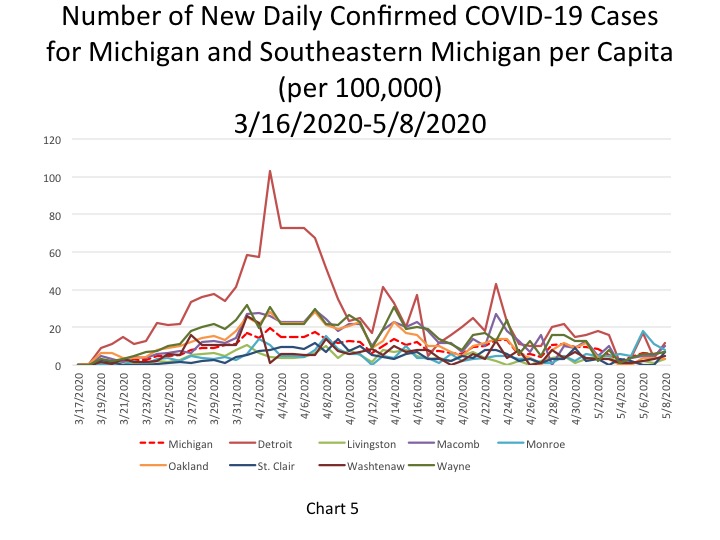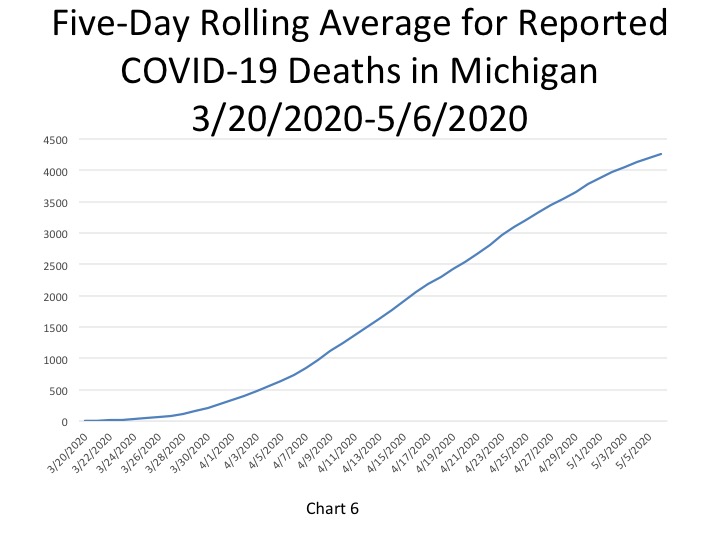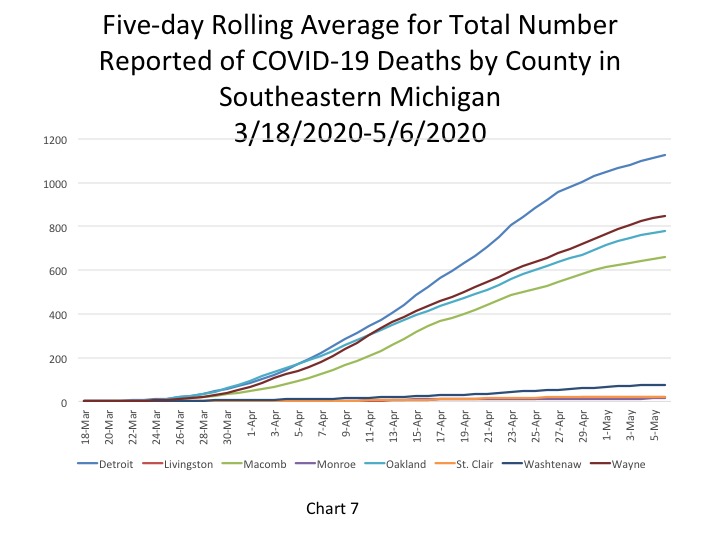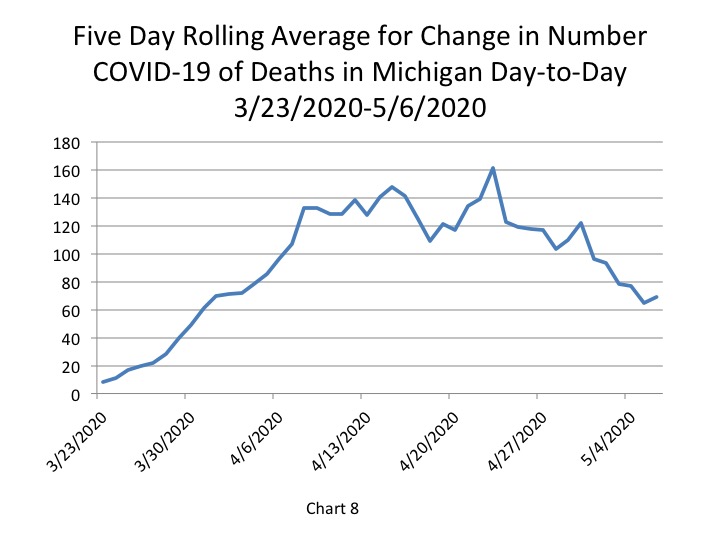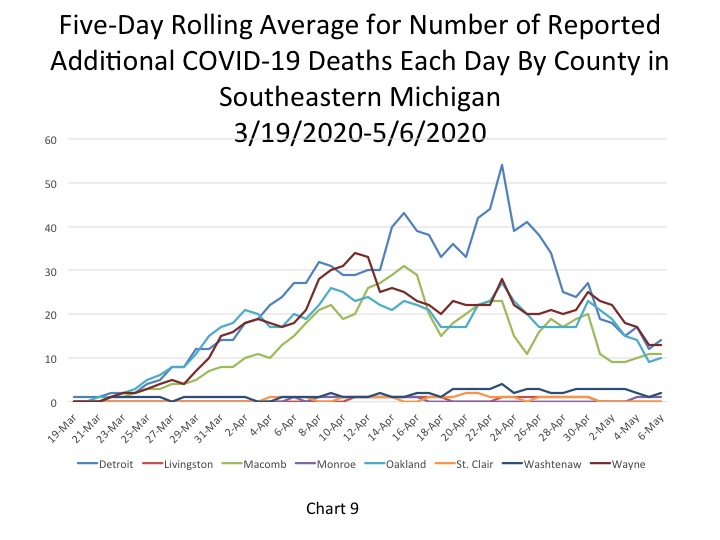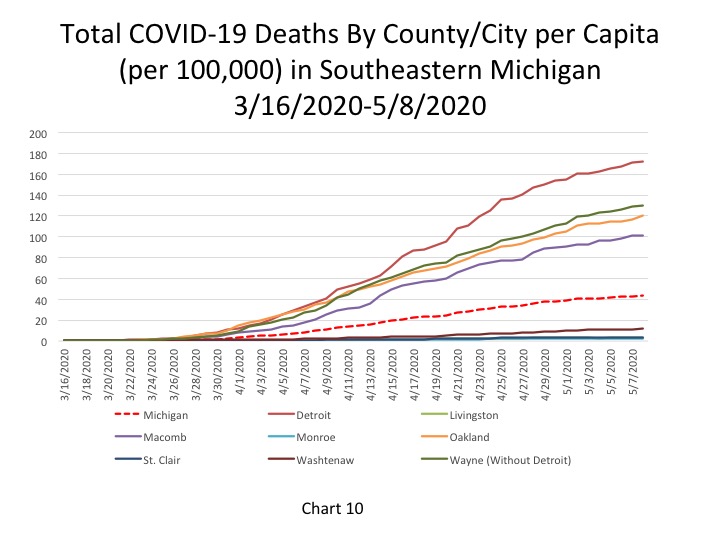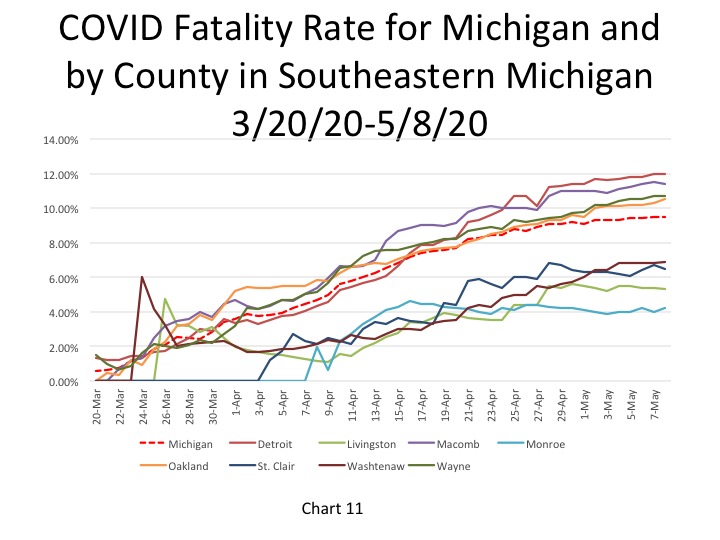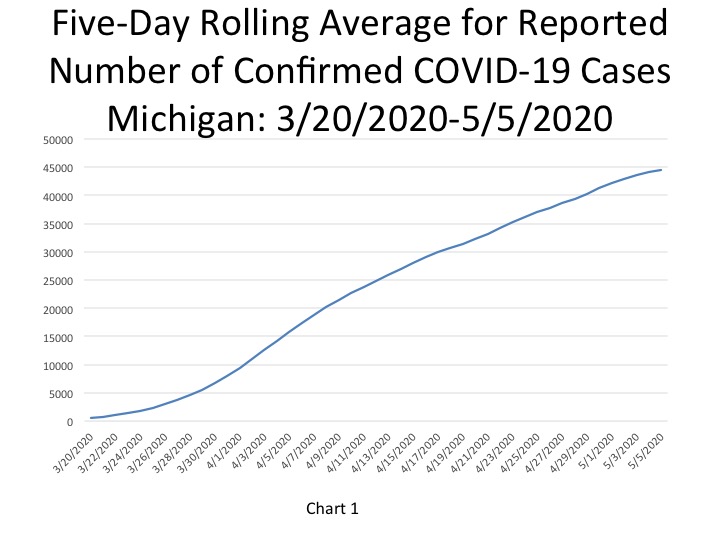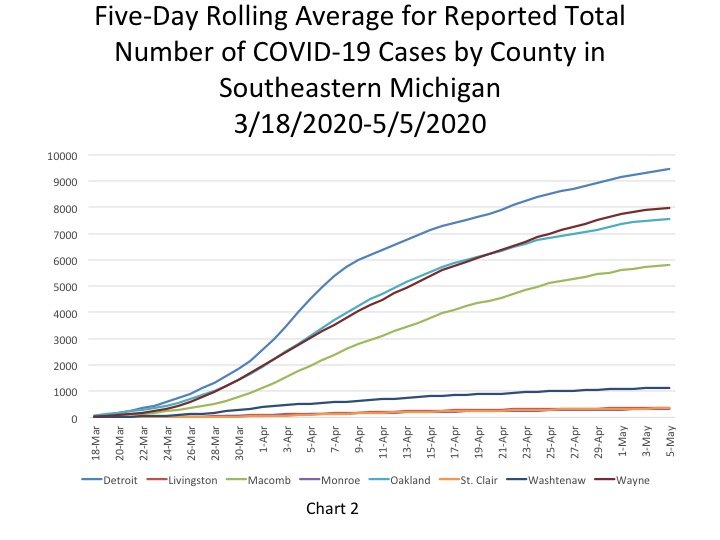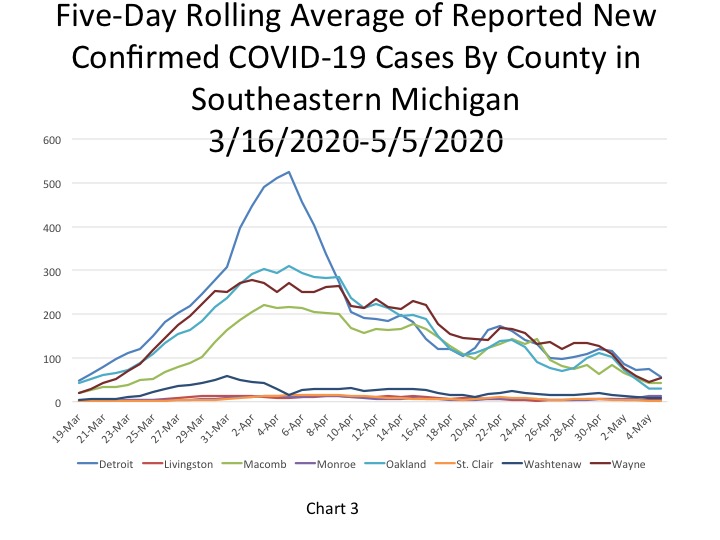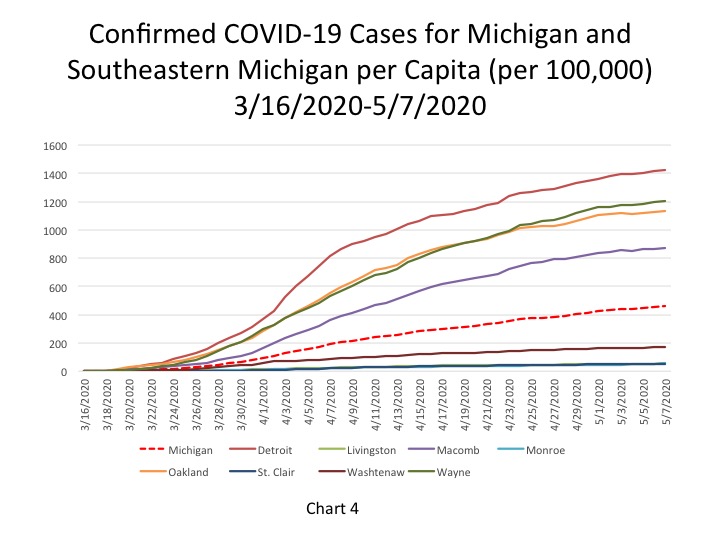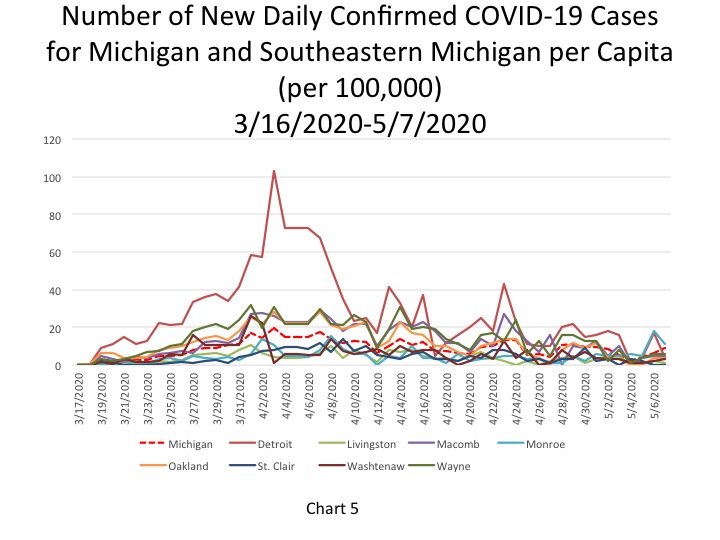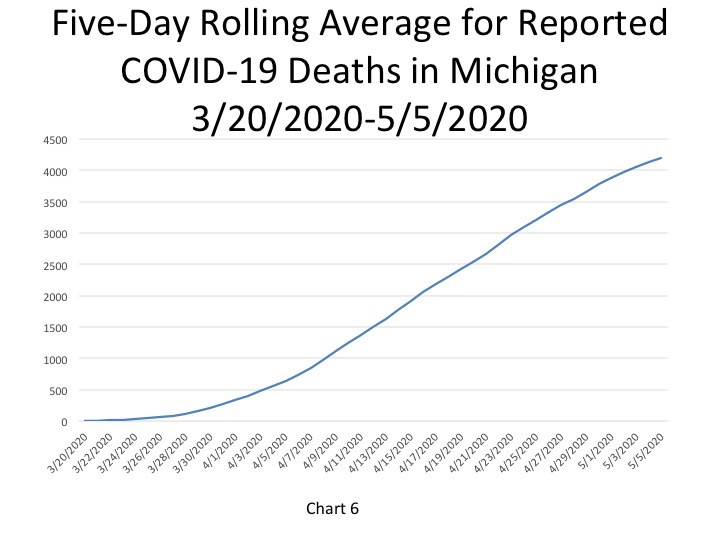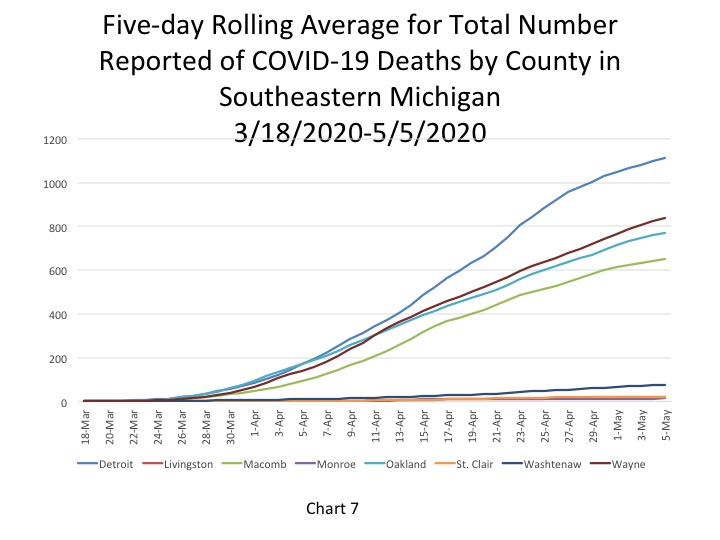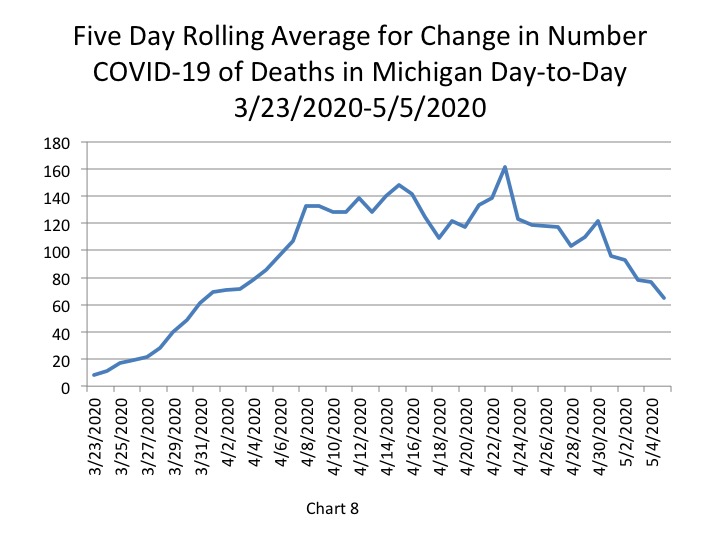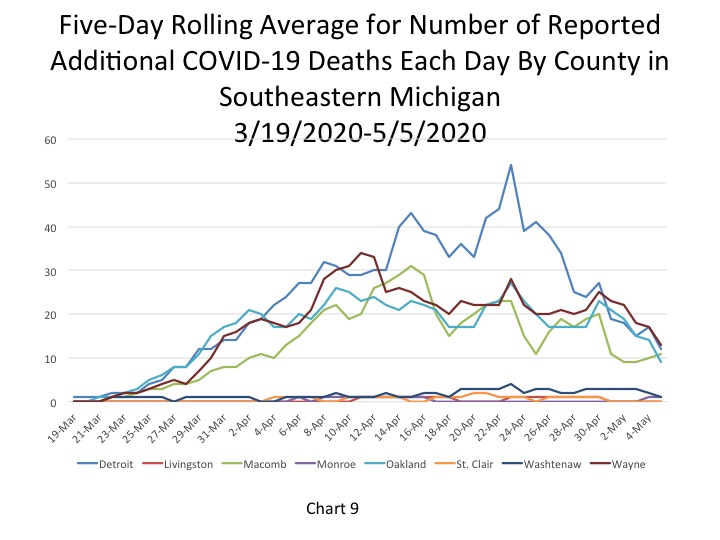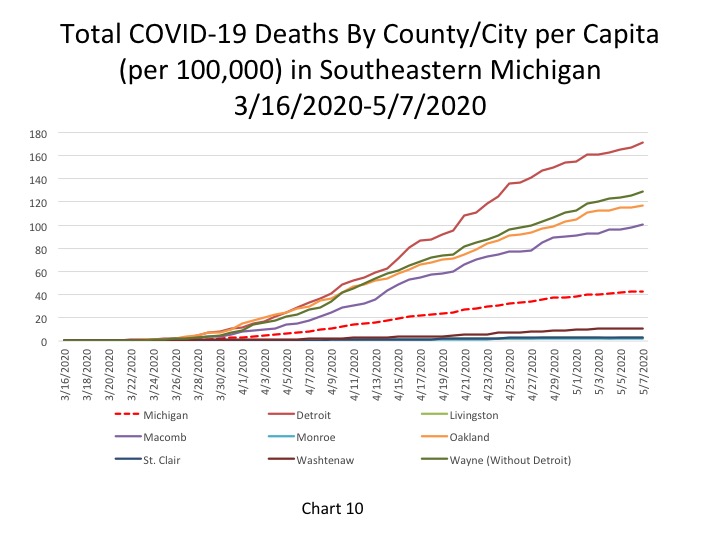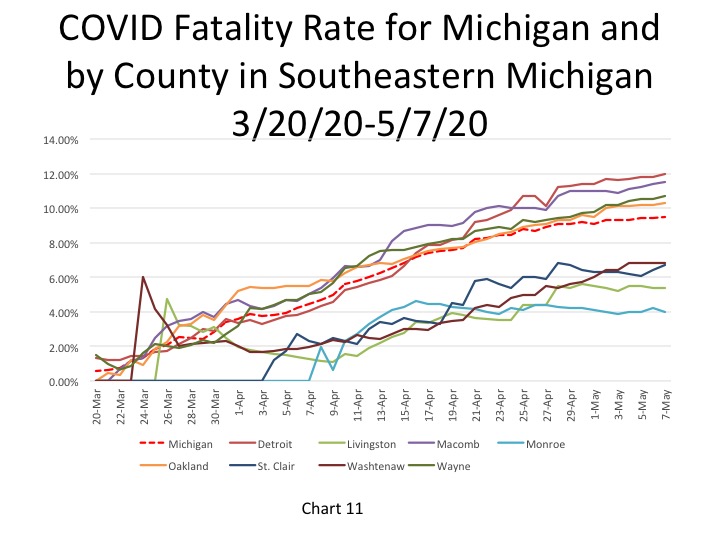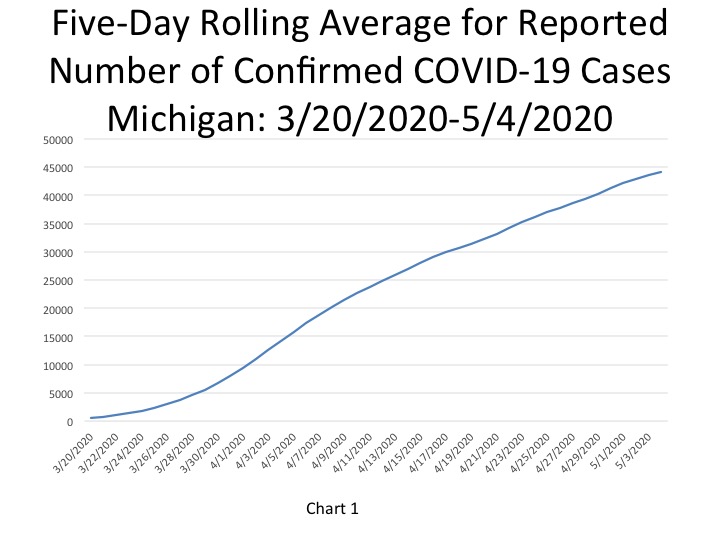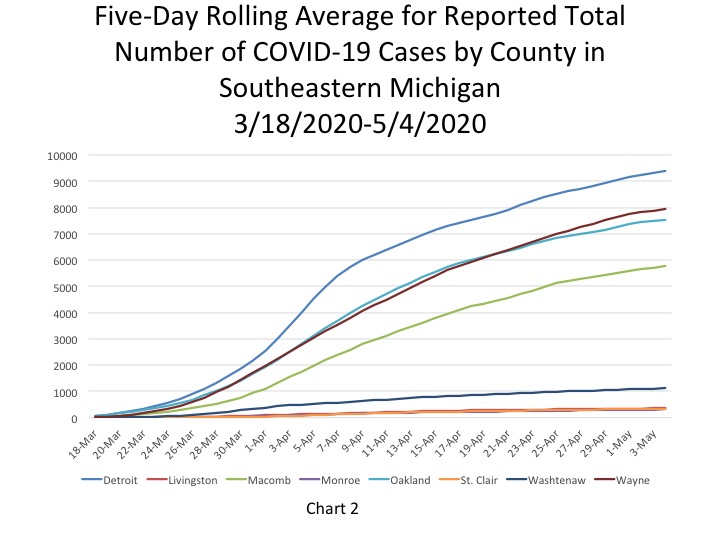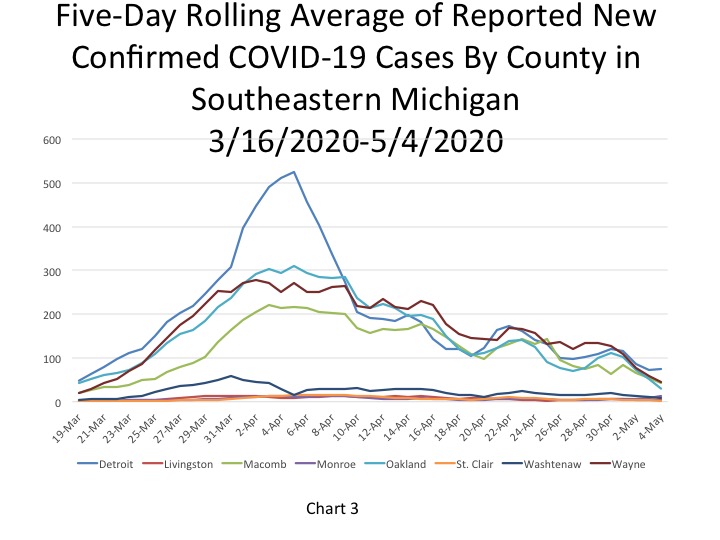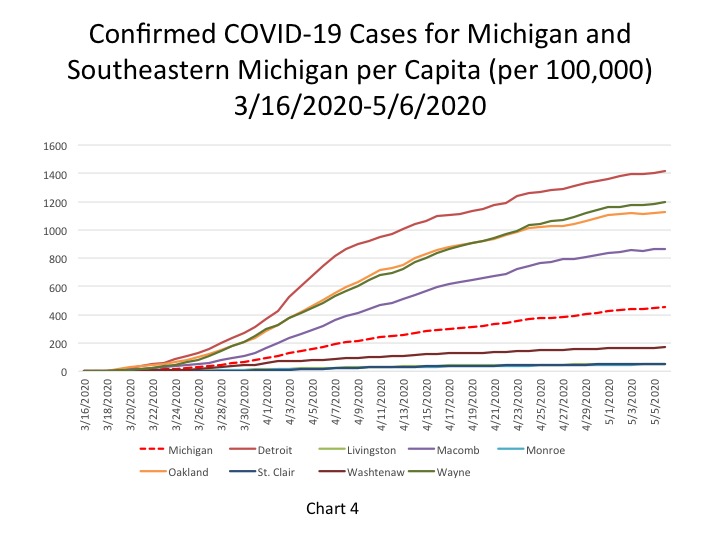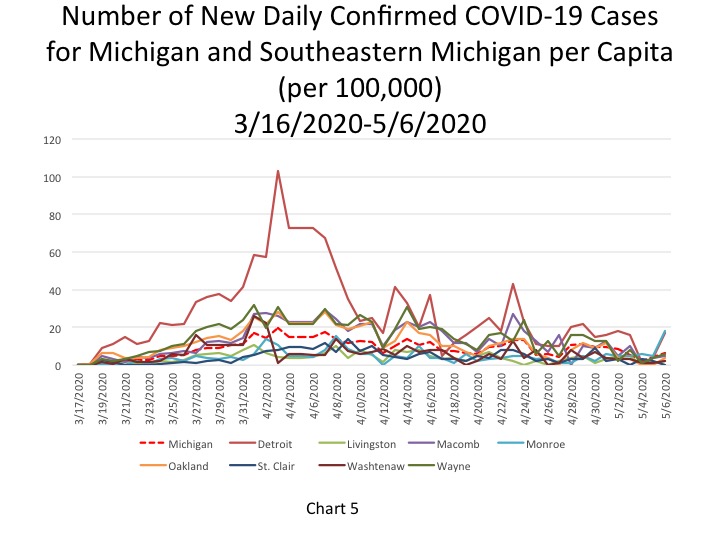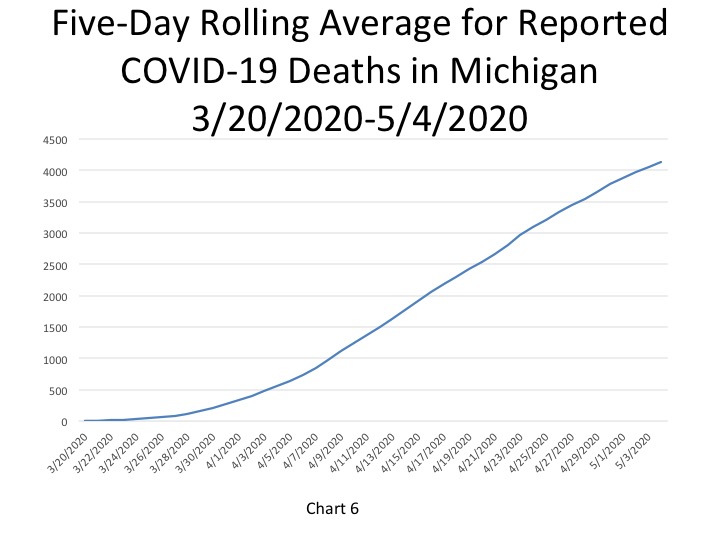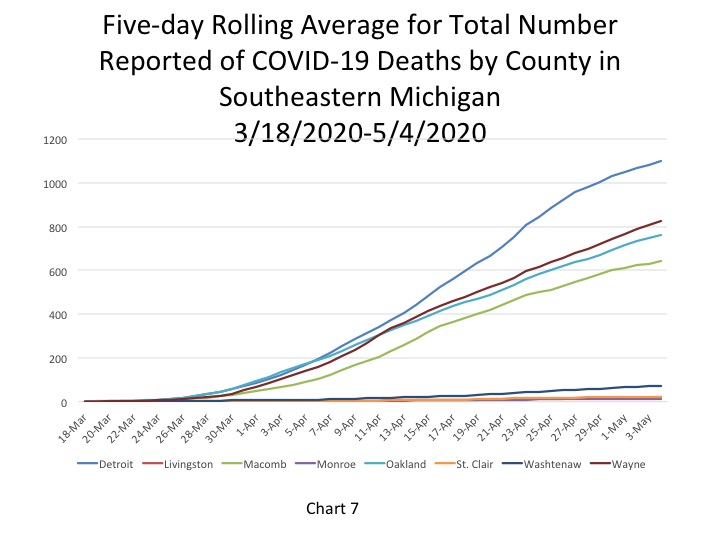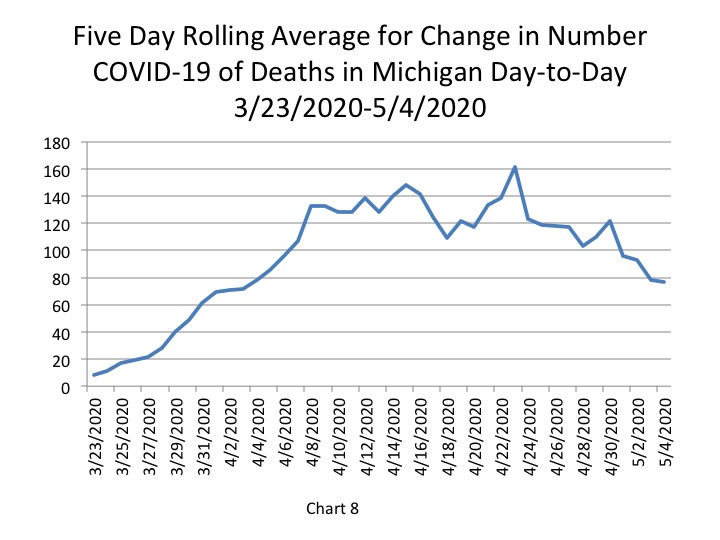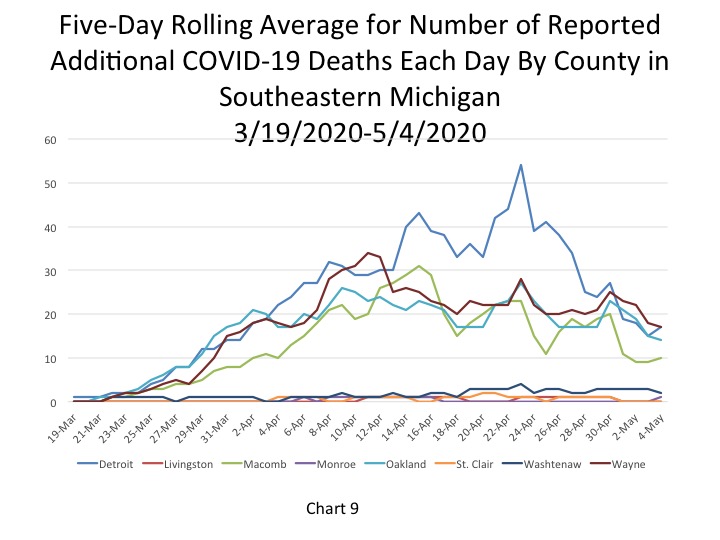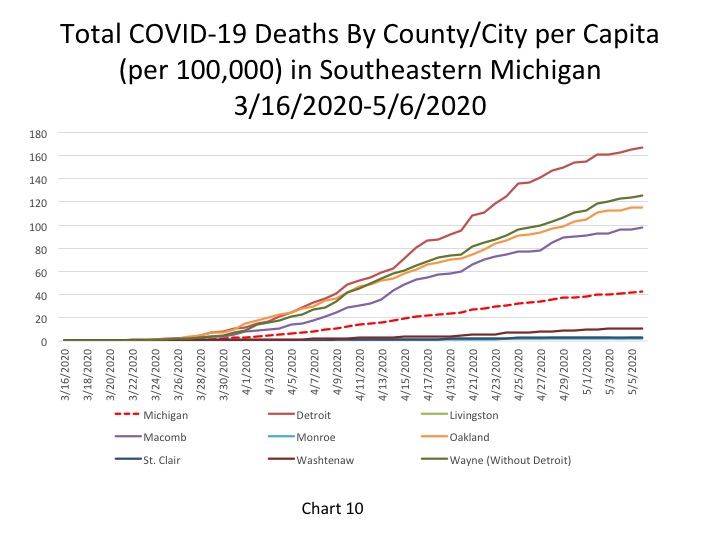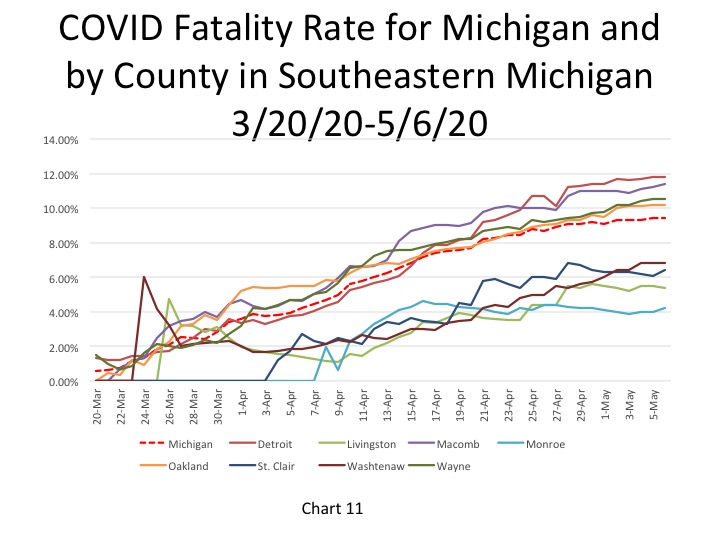According to the State of Michigan, the total number of COVID cases in Michigan rose to 50,079 on May 15, an increase of 497 cases from the previous day. This total was equivalent to 501 cases per 100,000 people (Chart 4). The five-day rolling average for the total number of COVID cases (Chart 1) reflects a smoother curve and adjusts for fluctuations in testing and/or the quality of reporting or failure to report. While the curve is smooth, Chart 1 shows that number of cases in Michigan continues to increase, although that rate has been declining overall.
Chart 2 shows that, based on the five-day rolling averages, the number of new COVID cases in Southeastern Michigan are also only gradually increasing. The number of cumulative COVID cases remained the highest in Detroit, reaching just above 10,000 on May 13, with Wayne County following at a reported 8,479 cases. On May 13, the five-day rolling average for the number of COVID cases in Oakland County was 7,861, and Macomb County reported 6,161.
The City of Detroit had 1,521 COVID cases per 100,000 people on May 15, an increase from 1,511 the day before (Chart 3). This is based upon a reported increase of 66 new cases, bringing the total number of COVID cases in Detroit to 10,230. Wayne County reported 804 cases per 100,000 people, and Oakland County had 636 cases per 100,000 people. These per capita rates were based upon 8,652 total cases for Wayne and 7,994 for Oakland. Macomb County reported 718 cases per 100,000 people, which is based upon 6,274 cases.
The daily data highlighted in these posts is from Michigan.gov/coronavirus, where data is updated daily at 3 p.m. Historical data were supplied from covidtracking.com, which republishes COVID data from the State. Additionally, the case totals do not reflect the number of people who have recovered, just those who have been infected.
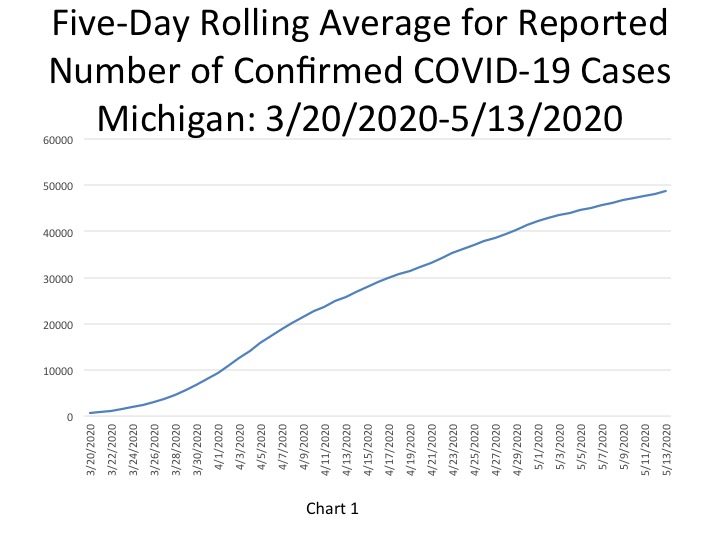
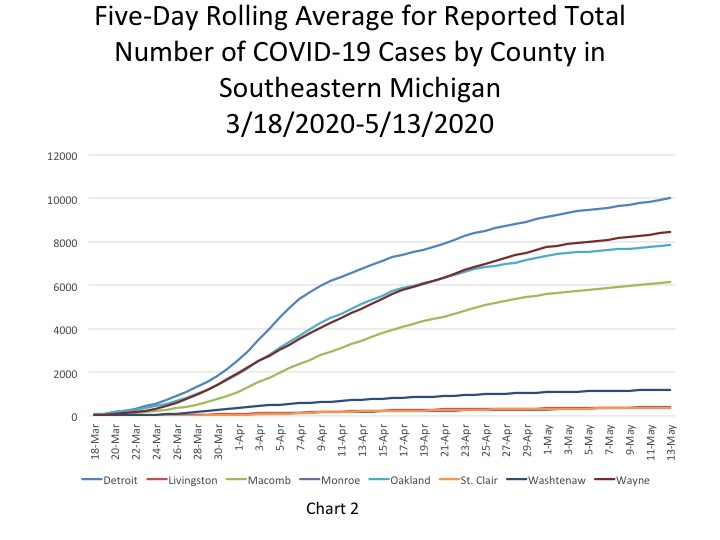
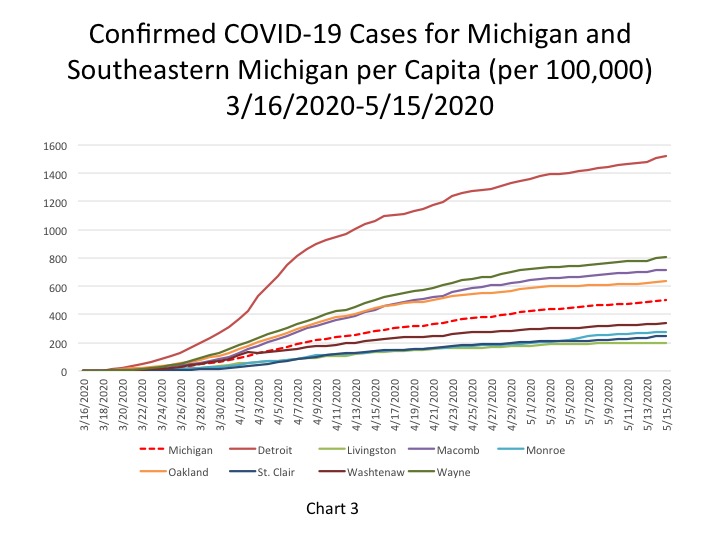
Chart 4 shows that Detroit reported the highest number of daily cases at 89 on May 13, only a small decrease from the day prior. Overall, this chart shows that daily case numbers are declining but the last two days those numbers have been higher than they were in the previous week. This is in part because the 5-day rolling average calculation used for this chart still reflects the spike in daily cases from two days ago.
Chart 5 highlights how the per capita rate for the number of new daily COVID cases per 100,000 people did drop down on May 15, following the May 14 spike. Those rates are now coming back inline with the per capita rates that have been reported for the last week. The per capita rate for Detroit on May 15 was 10 new COVID cases per 100,000 people; this was equivalent to 66 new cases. Wayne County’s per capita rate was 4 new COVID cases, which was equivalent to 46 new cases. Oakland County reported a per capita rate of 3 new cases per 100,000 people on May 15, which was equivalent to 42 new cases, and Macomb County reported a rate of 5, which was also equivalent to 42 new cases.
The State’s per capita rate was 5 new cases per 100,000 people, equivalent to 497 new cases. Of these 497 new cases, Southeastern Michigan accounted for 209. This shows that Southeastern Michigan did not account for the majority of new cases in the State on May 15.
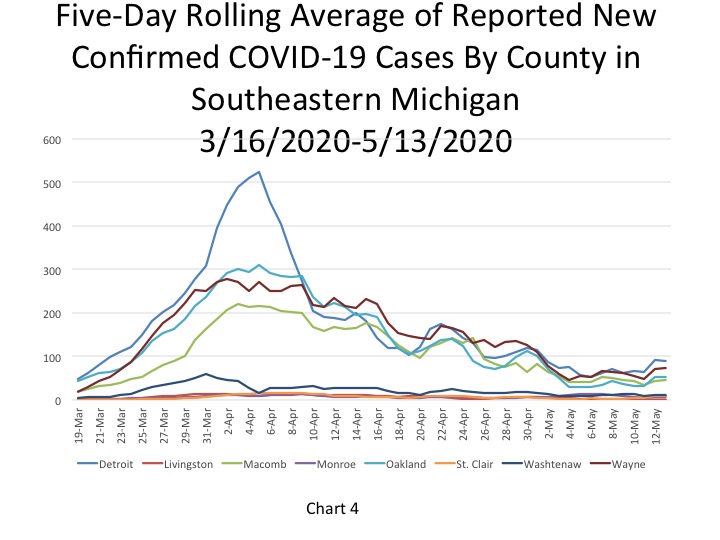
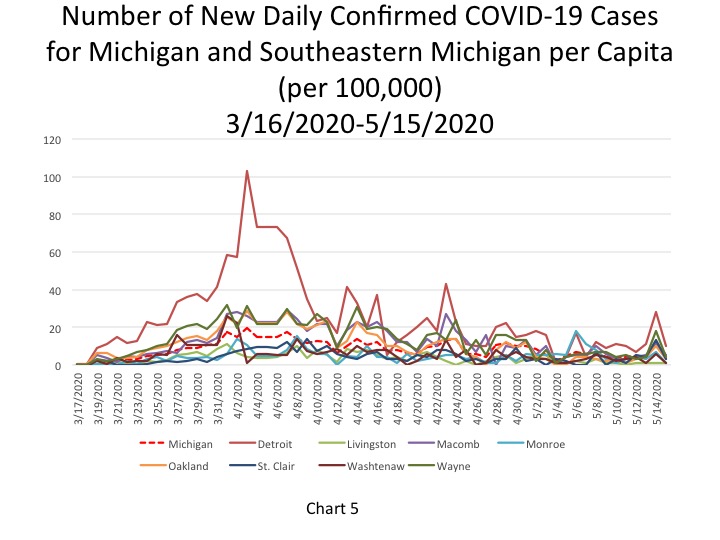
In Chart 6, the five-day rolling average for the number of deaths in Michigan shows a continuing slow increase (a lagged number of 4,717 deaths, an increase of 55 deaths). The actual reported COVID-19 deaths reached 4,825 on May 15, an increase of 38 deaths from the day prior. Of those 38 additional deaths Southeastern Michigan accounted for 23 of them on May 15.
Chart 7 (a 5-day rolling average) portrays how the total number of COVID deaths in Southeastern Michigan continues to level off, with Detroit reporting the highest cumulative number of deaths at 1,220 on May 13. Wayne County had the second highest total at 935 on May 13.
Chart 8 portrays the total number of COVID deaths per 100,000 people. As of May 15, the cumulative total of COVID deaths per 100,000 people in Detroit was 184 (representing 1,236 deaths). In Wayne County there were 88 COVID deaths per 100,000 people (947 total deaths), in Oakland County there were 71 deaths per 100,000 people (888 total deaths), and in Macomb County there were 83 COVID deaths per 100,000 people (728 total). Detroit reported the highest number of additional deaths at 8.
The State of Michigan had 48 COVID deaths per 100,000 people.
In Chart 9 we see that the number of daily statewide deaths increased slightly to 55 on May 13; 52 daily deaths were reported on May 12. Overall though, the number of daily deaths continues to decline both throughout the State and Southeastern Michigan. Chart 10 shows how the number of deaths in Southeastern Michigan decreased throughout the region, except in Oakland County. On May 13 Oakland County reported 11 daily COVID deaths, 2 more than the day prior. Both Oakland County and Detroit reported the highest number of daily deaths on May 13 at 11. These numbers are based on 5-day rolling averages.
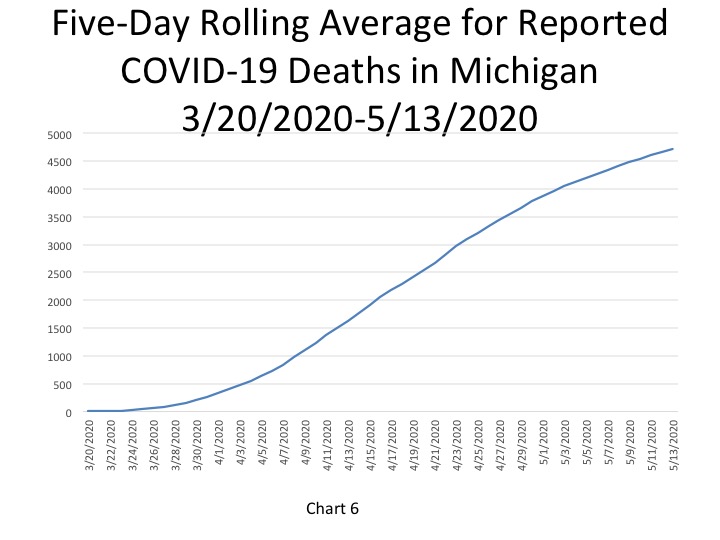
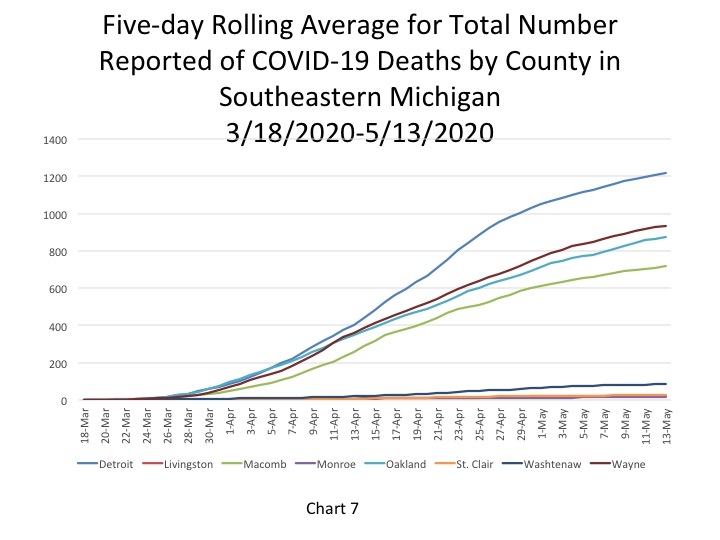
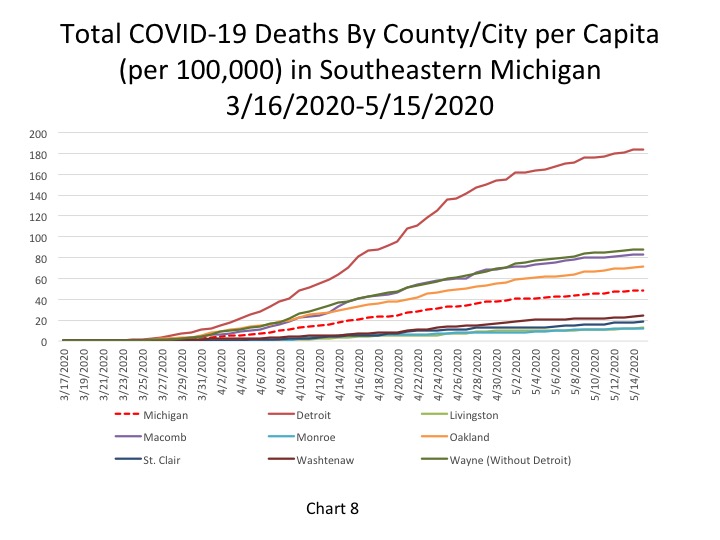
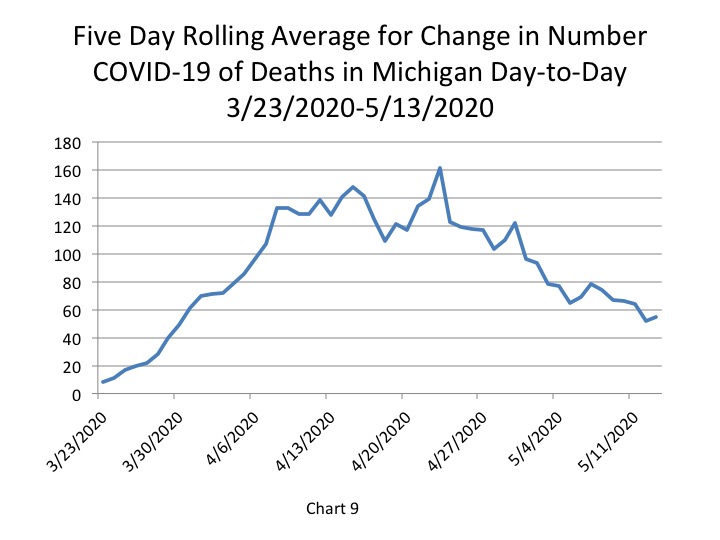
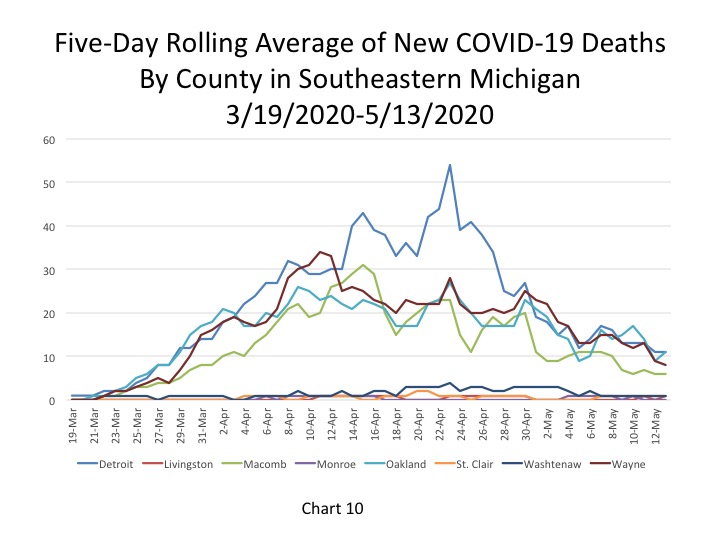
The fatality rates remained stable for May 15, with Detroit continuing to have the highest rate at 12.2 percent. The State reported a 9.6 percent fatality rate.
One reason we may be seeing such high fatality rates in Michigan is due to the low testing rates. When only having-presumably-a lower of number confirmed COVID cases than is actually likely due to the limited availability of tests, the fatality rate appears higher because the base comparison is smaller than it might be.
On the other hand, there is the possibility that despite increasing numbers of tests, the case fatality rate might remain high. If so, this means COVID-19 is a very lethal disease. A recent New York Times article stated that the number of non-reported COVID deaths could be as many as 21,500 throughout the Country. The NYT estimates Michigan has among the highest number of unreported Covid-19 cases in the U.S.
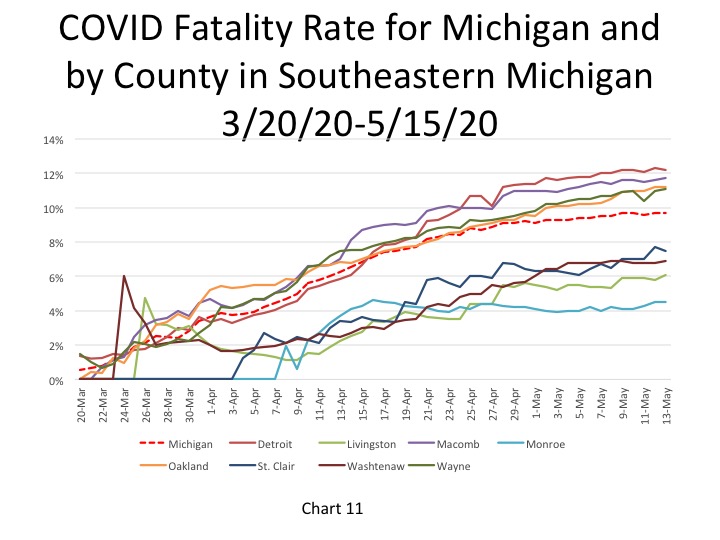
The number of daily deaths continues to decline in Michigan and throughout Southeastern Michigan. While this is certainly positive news, the daily case numbers still have a long way to go before reaching the single digits. Recent daily case number increases have been related to data backlogs and increased testing. On May 13 the State performed the highest number of COVID tests in a single day yet. With more testing available we can better monitor those infected, allowing higher recovery rates, lower number of deaths and fewer opportunities for community spread.
Additionally, as noted yesterday, the decline in daily deaths may not be as accurate as suspected, meaning more COVID deaths have occurred than are accounted for.
